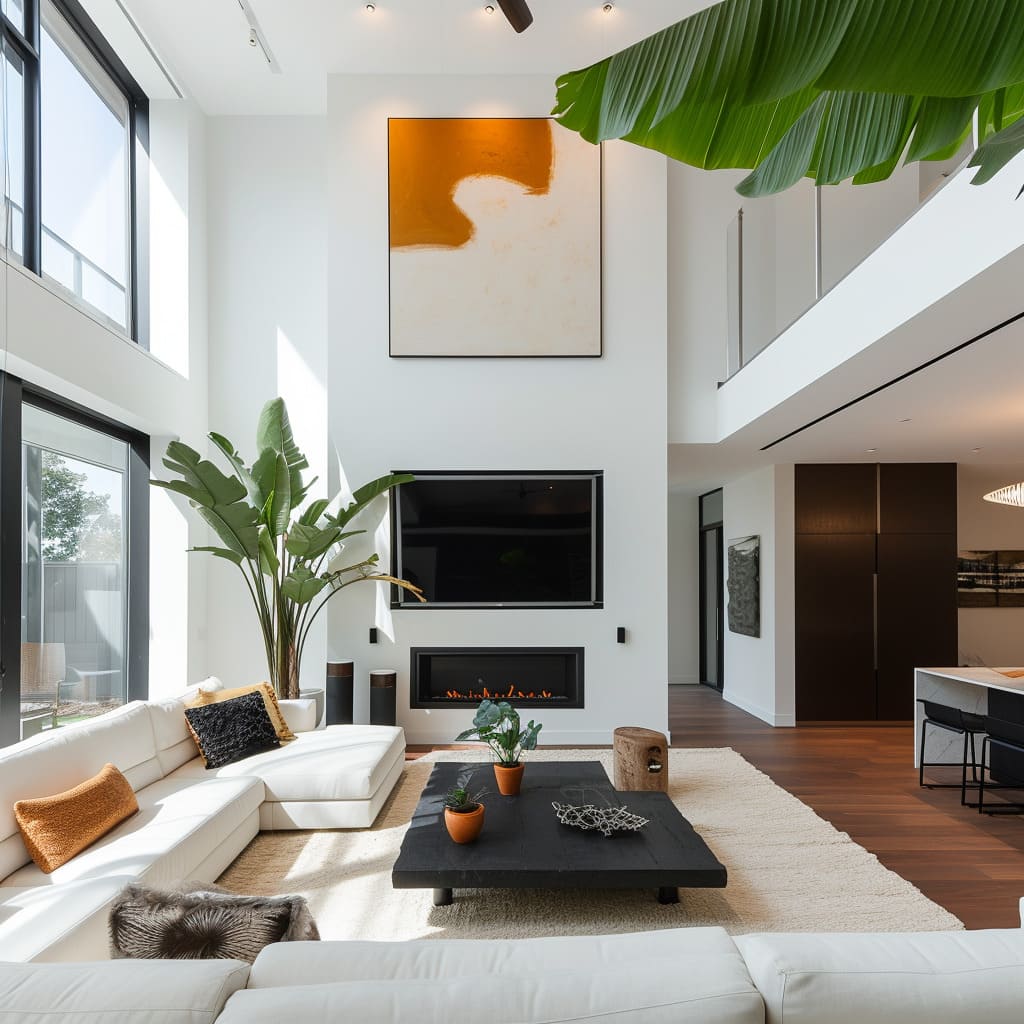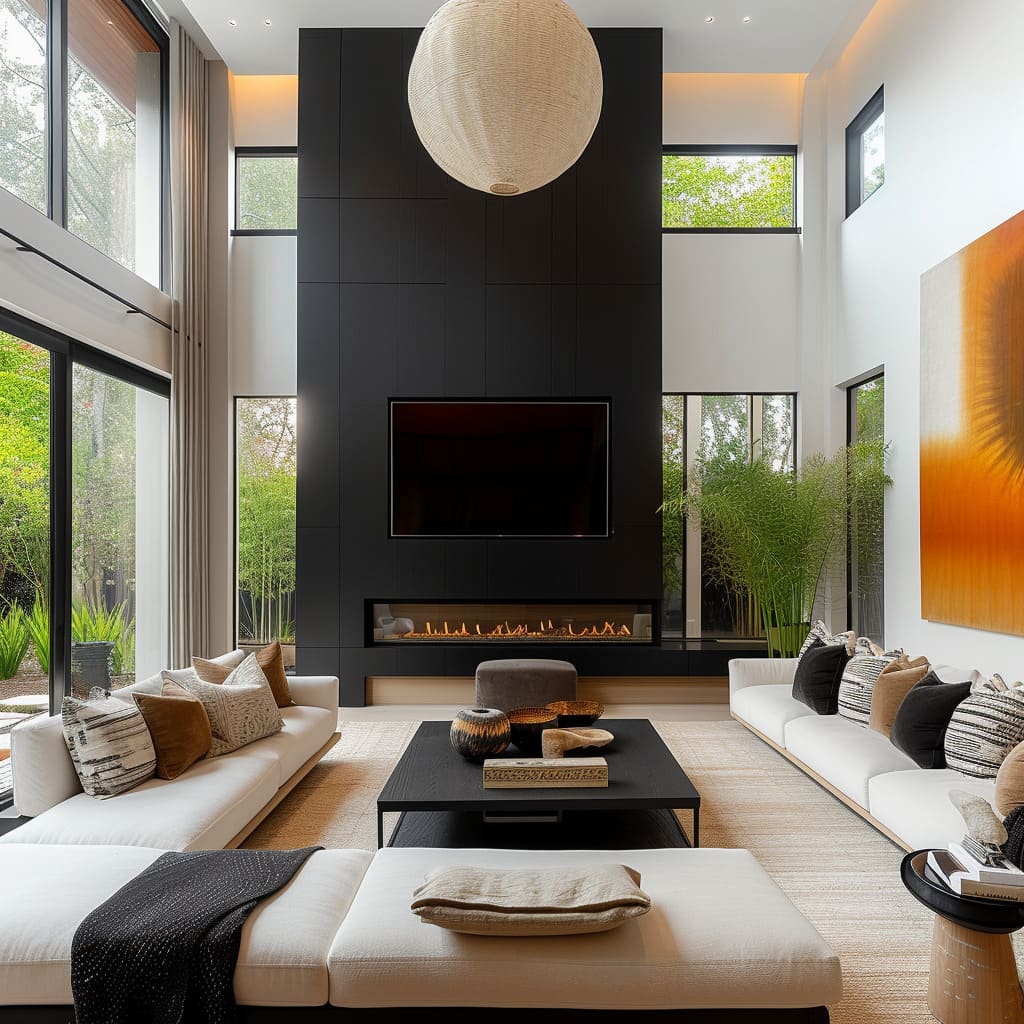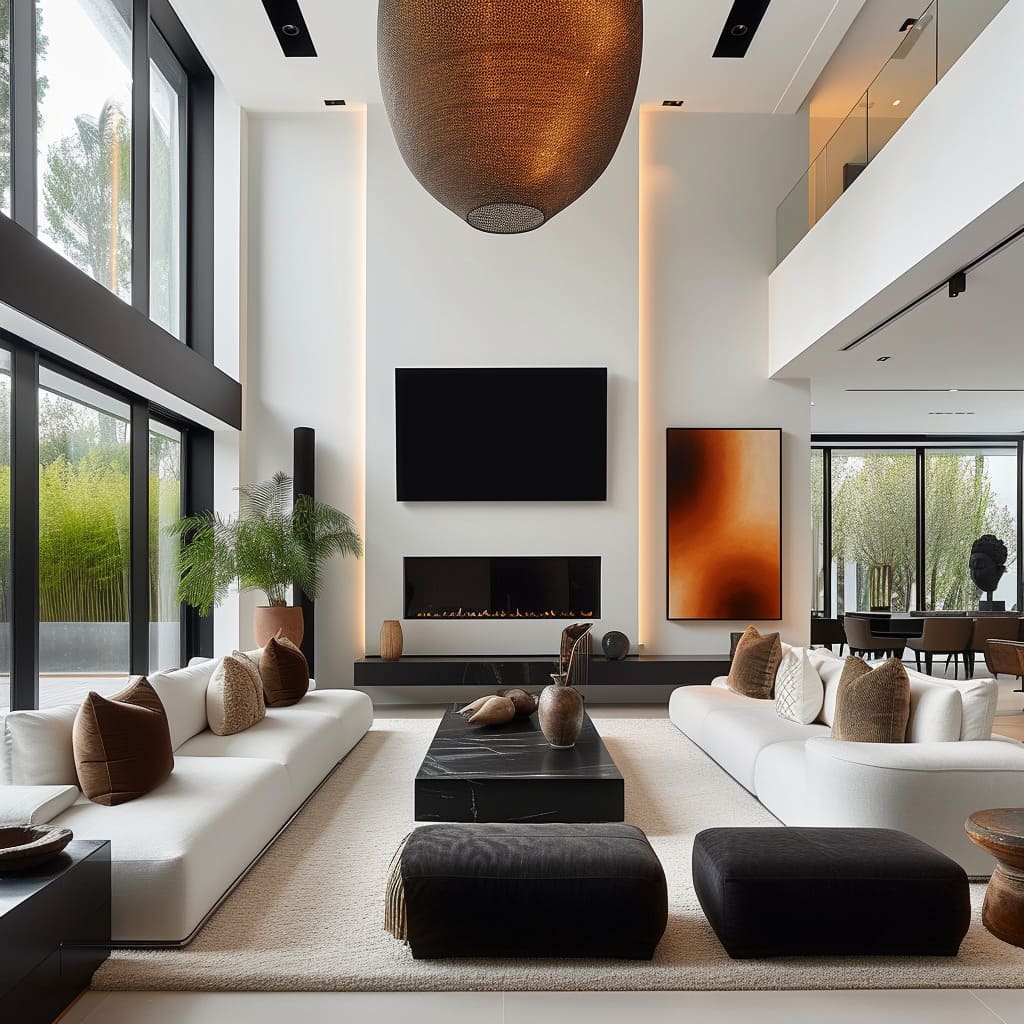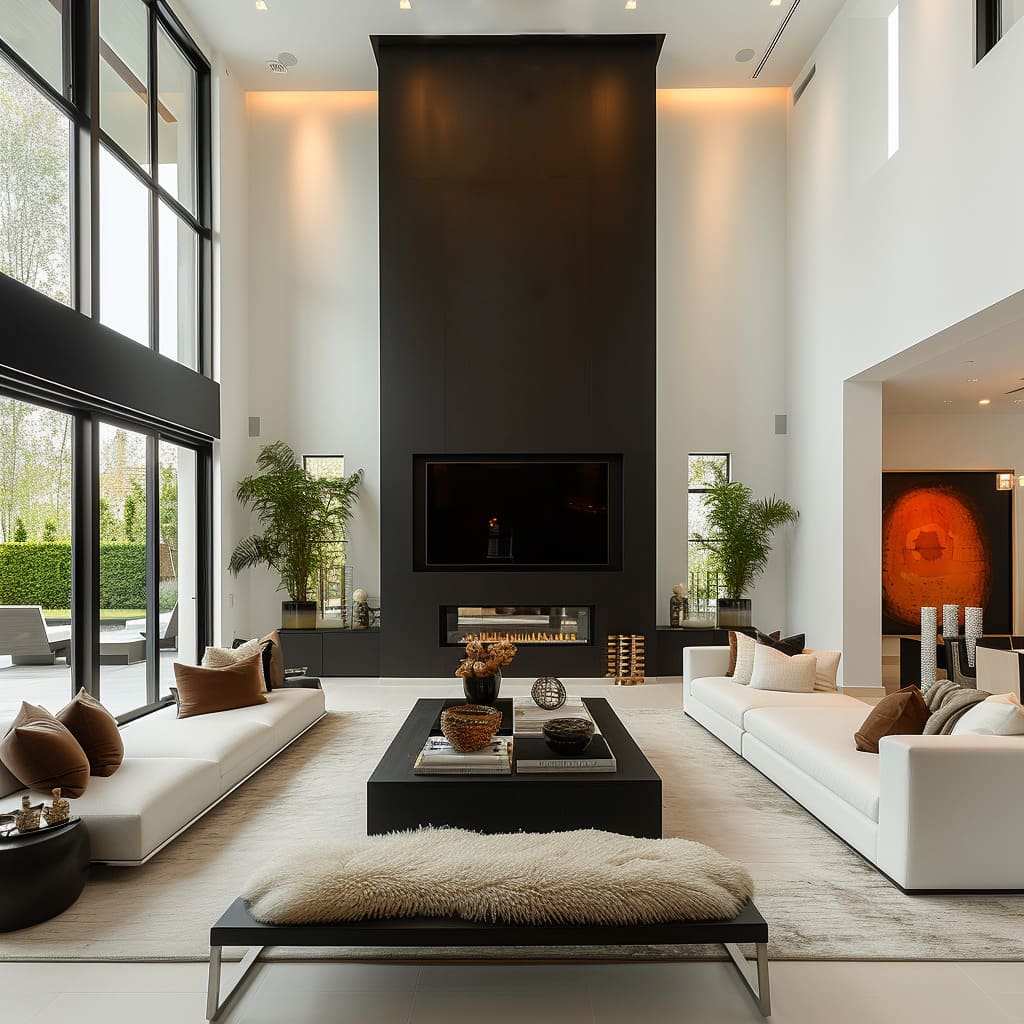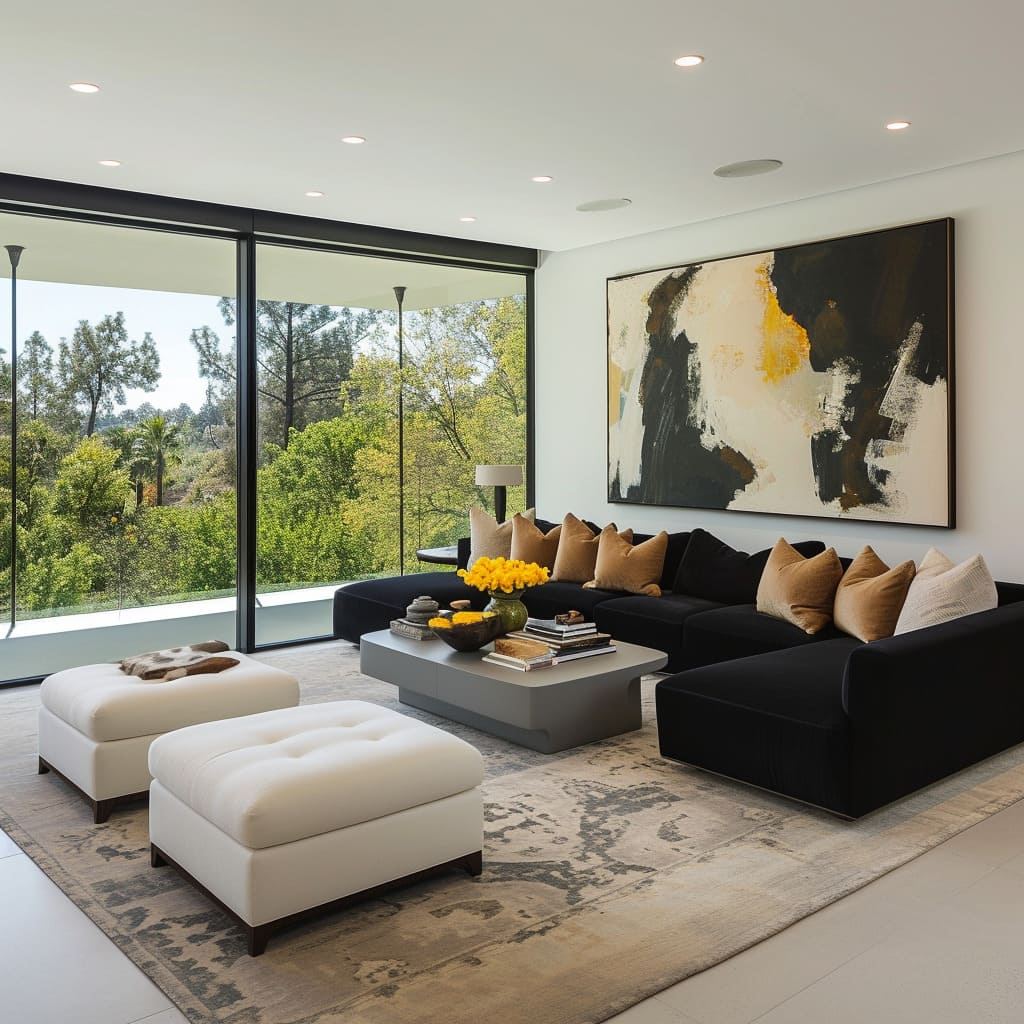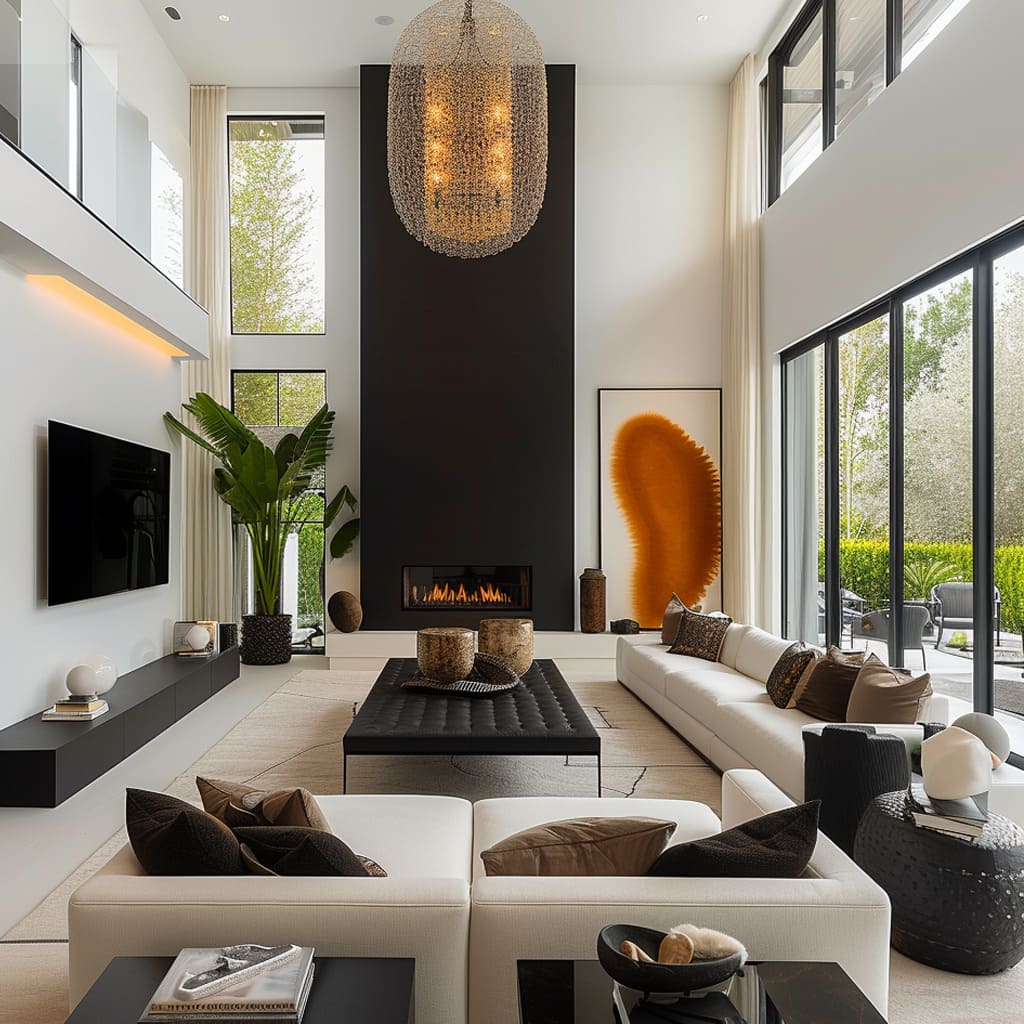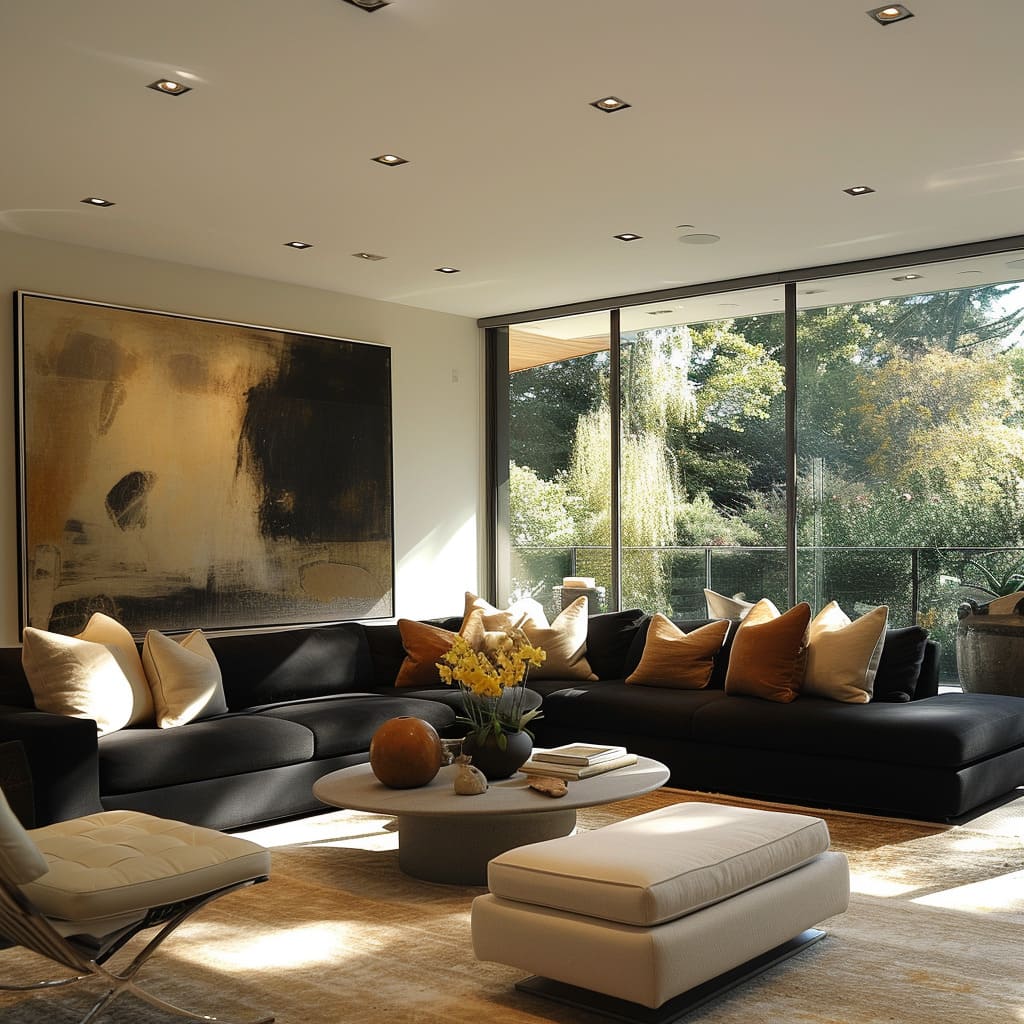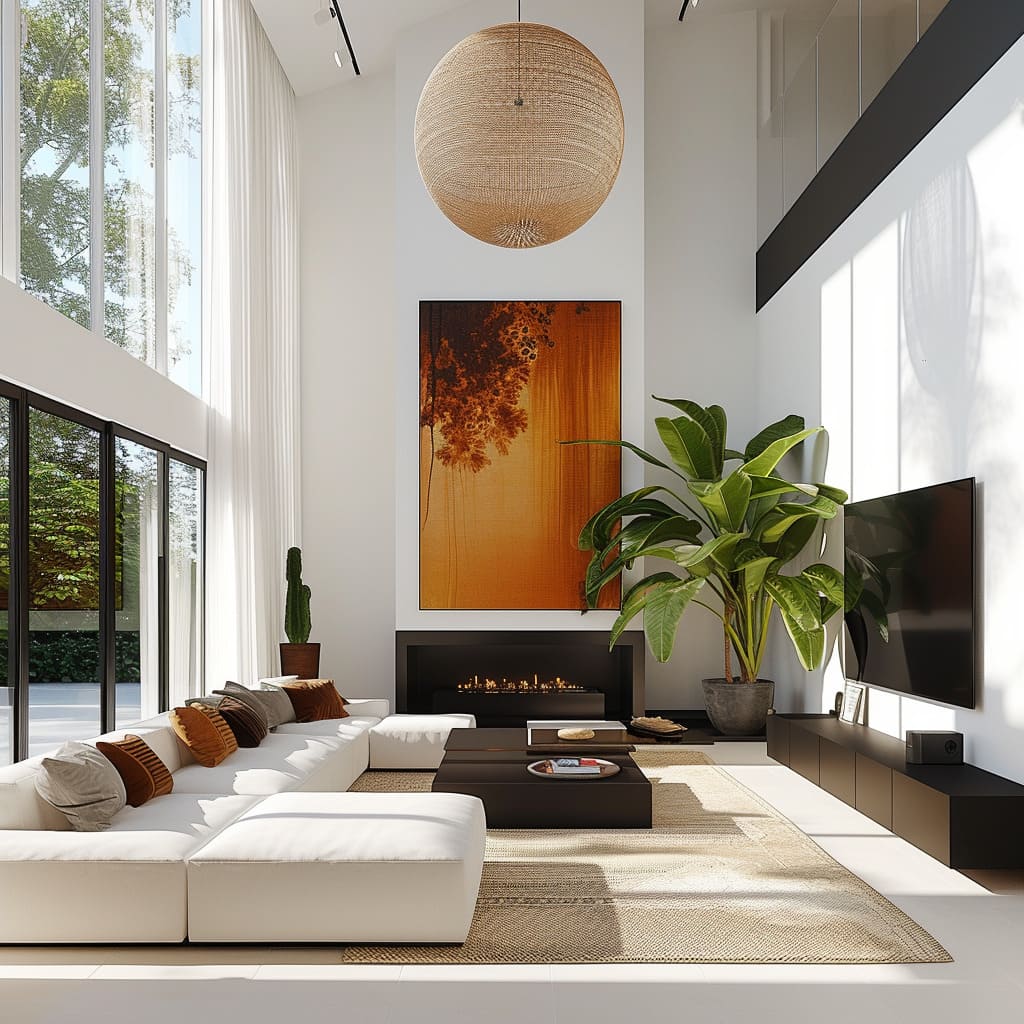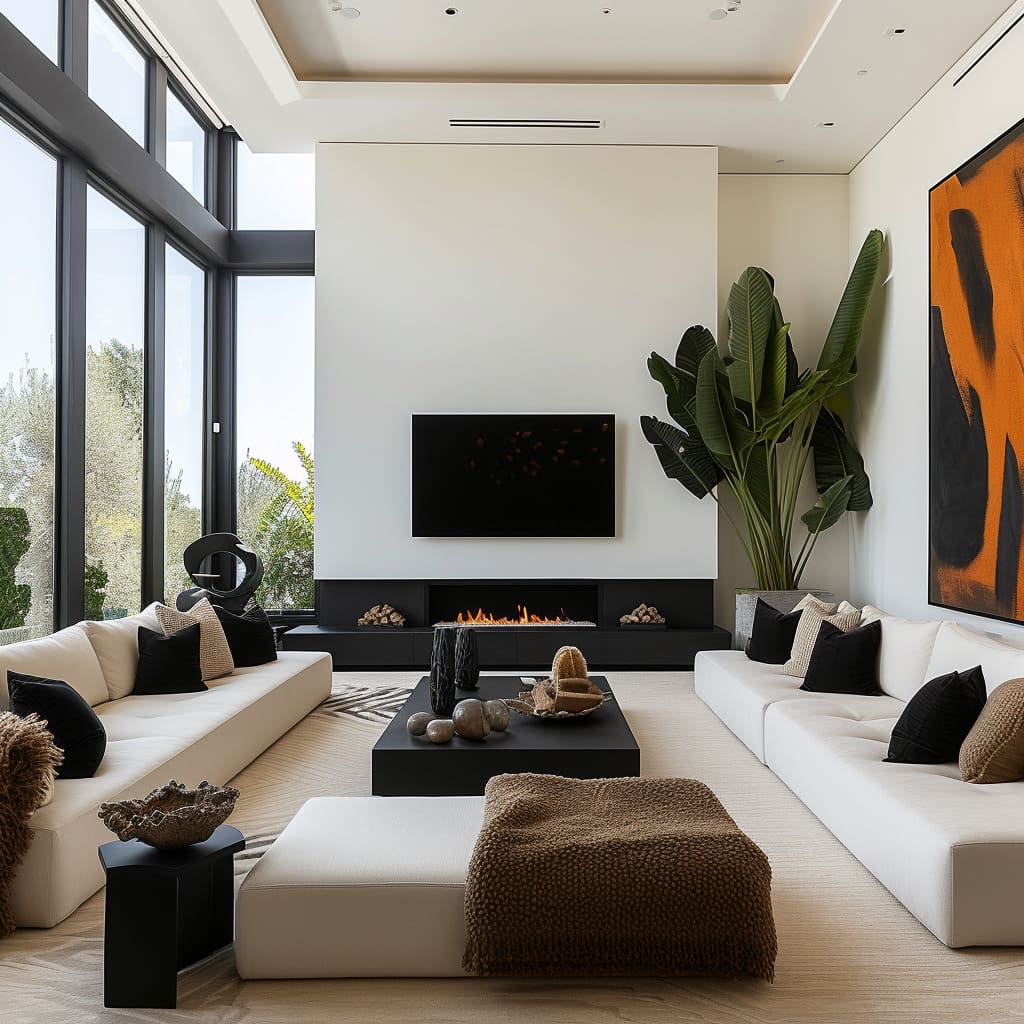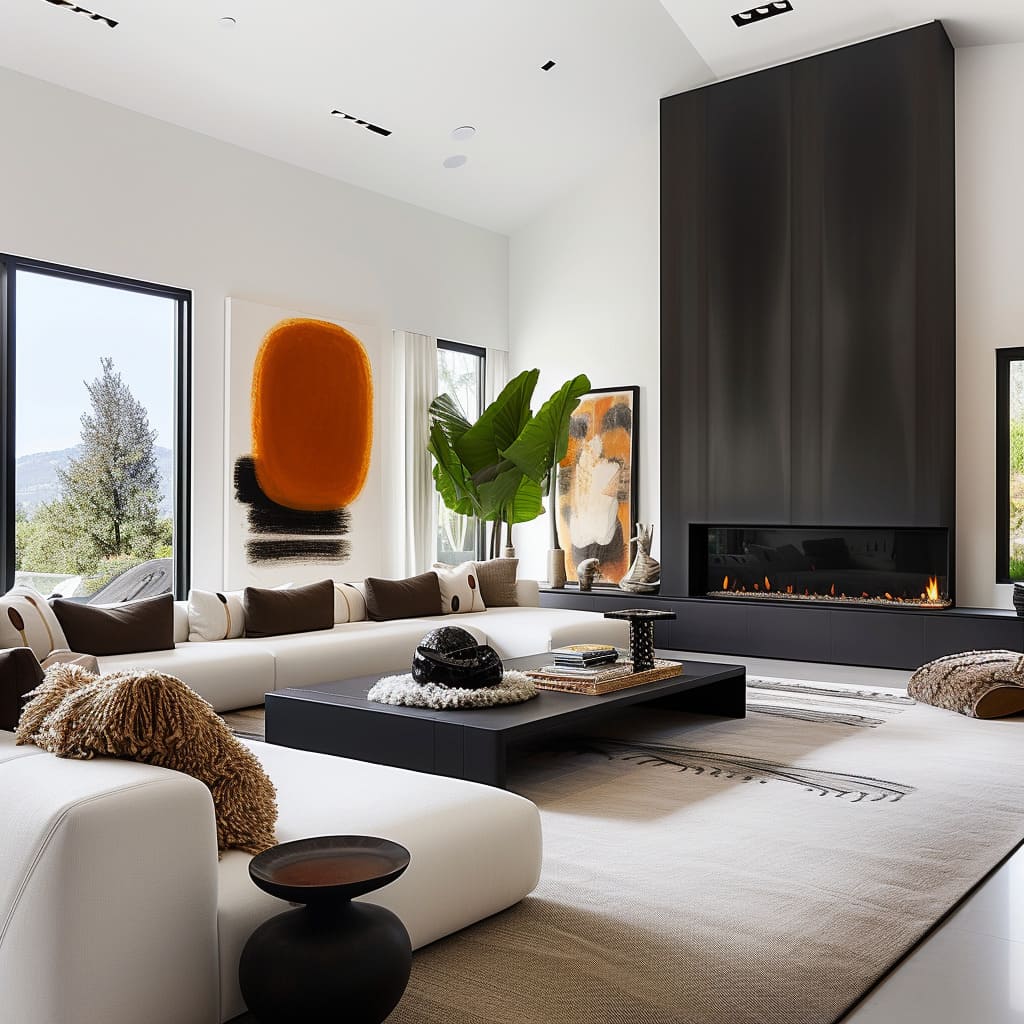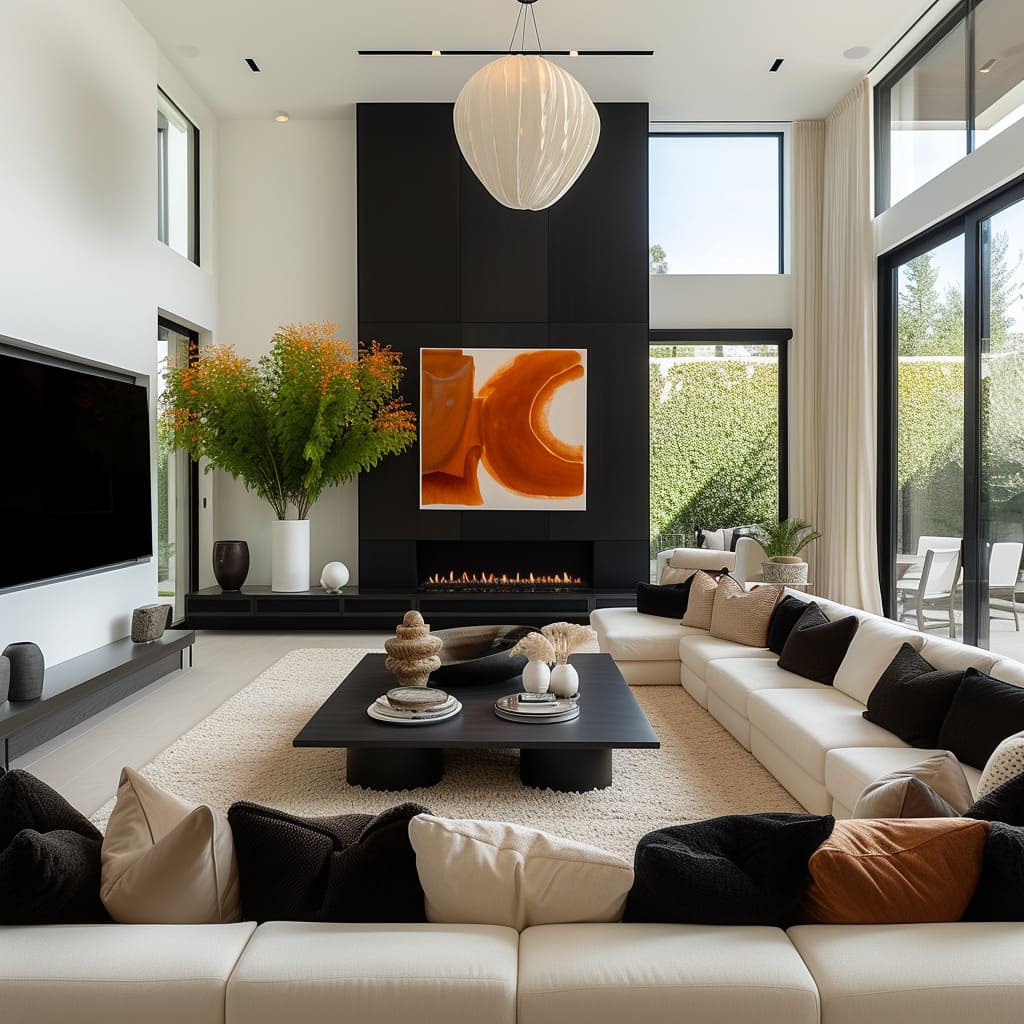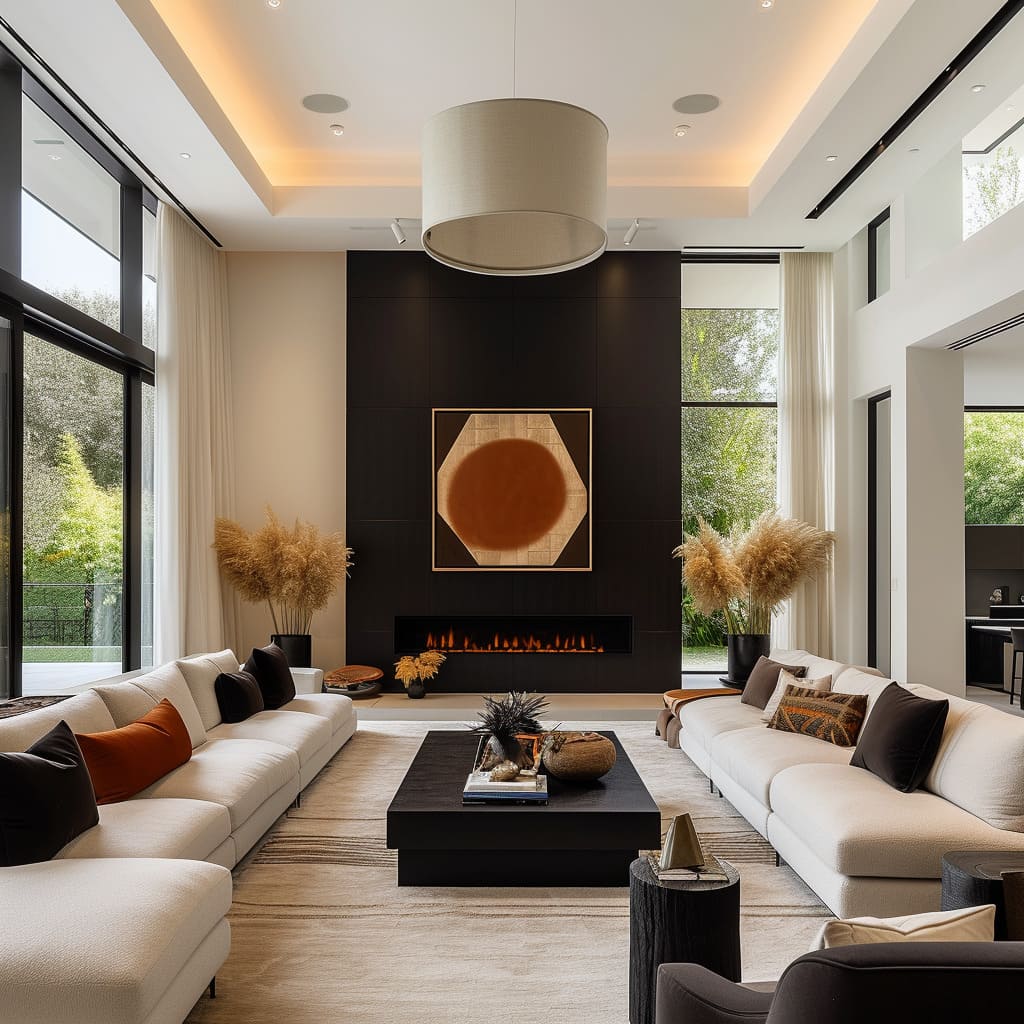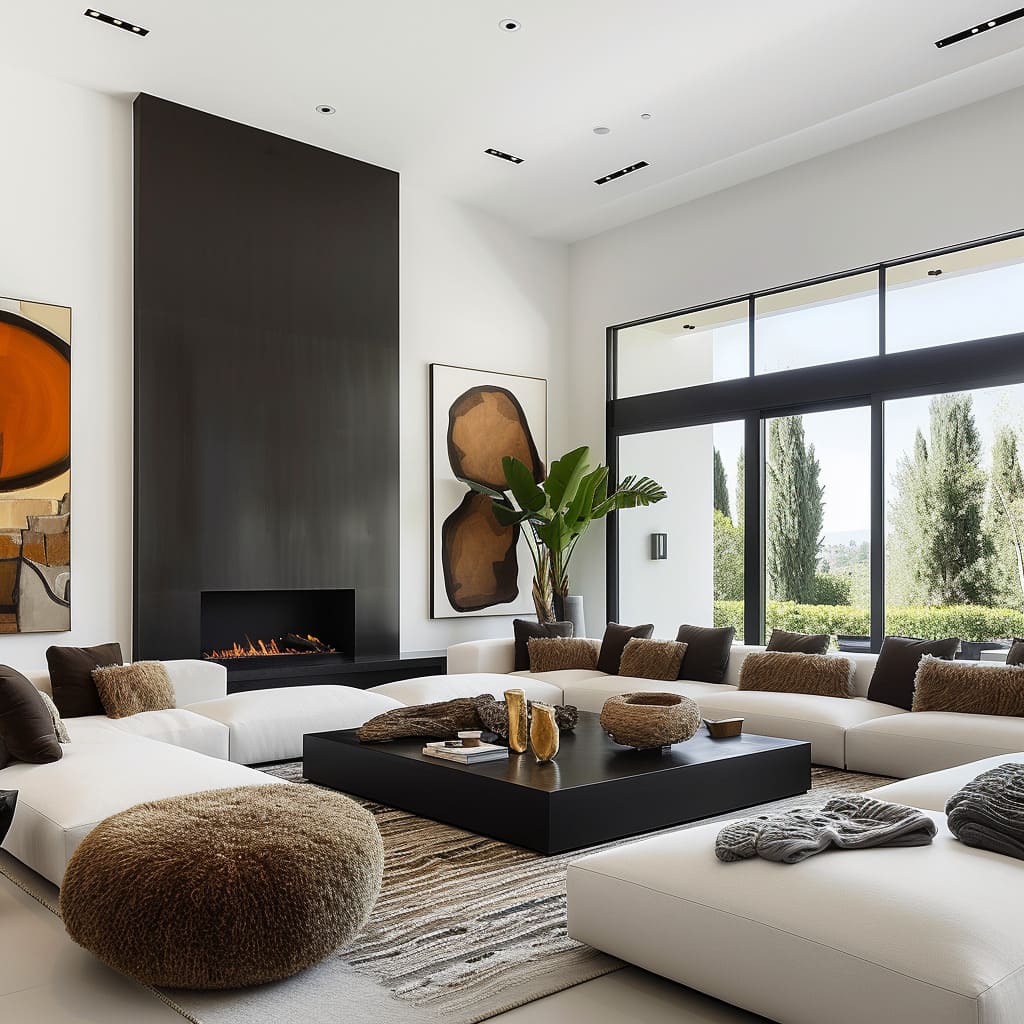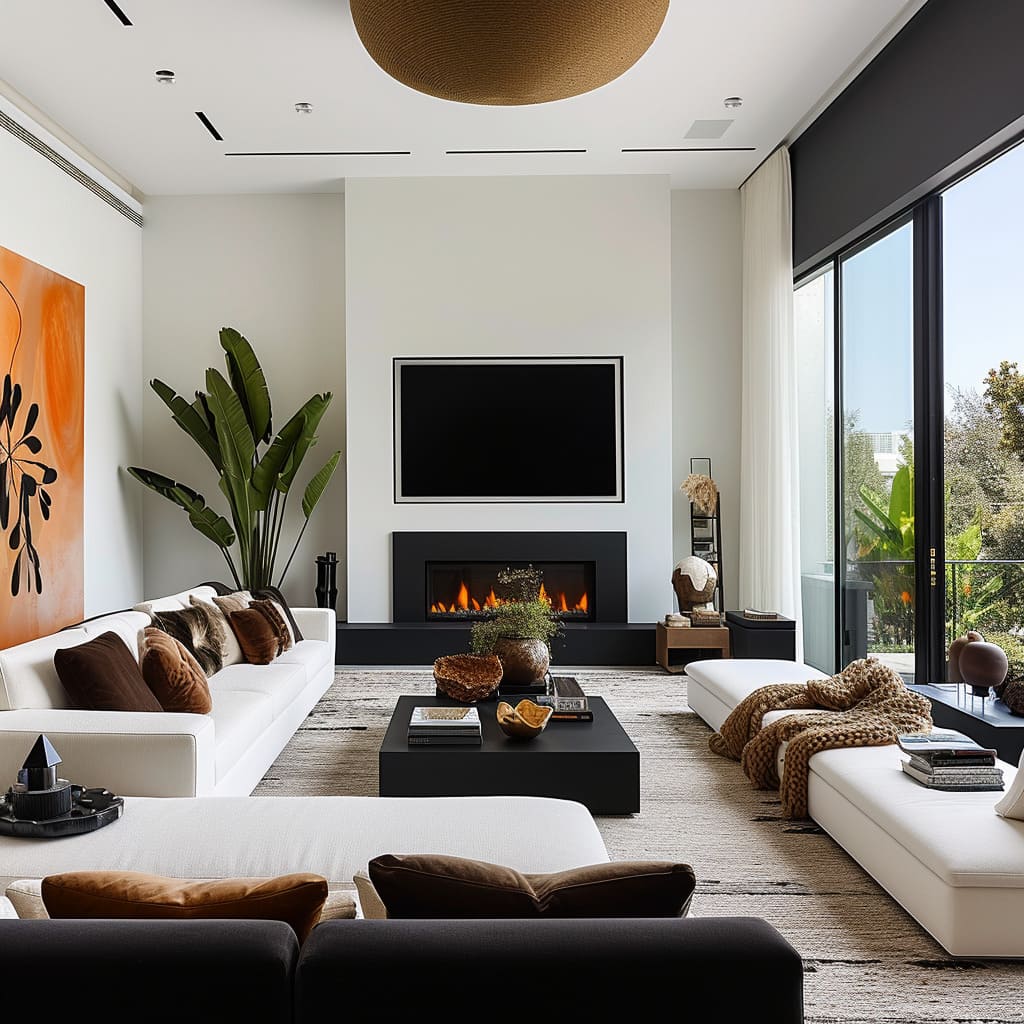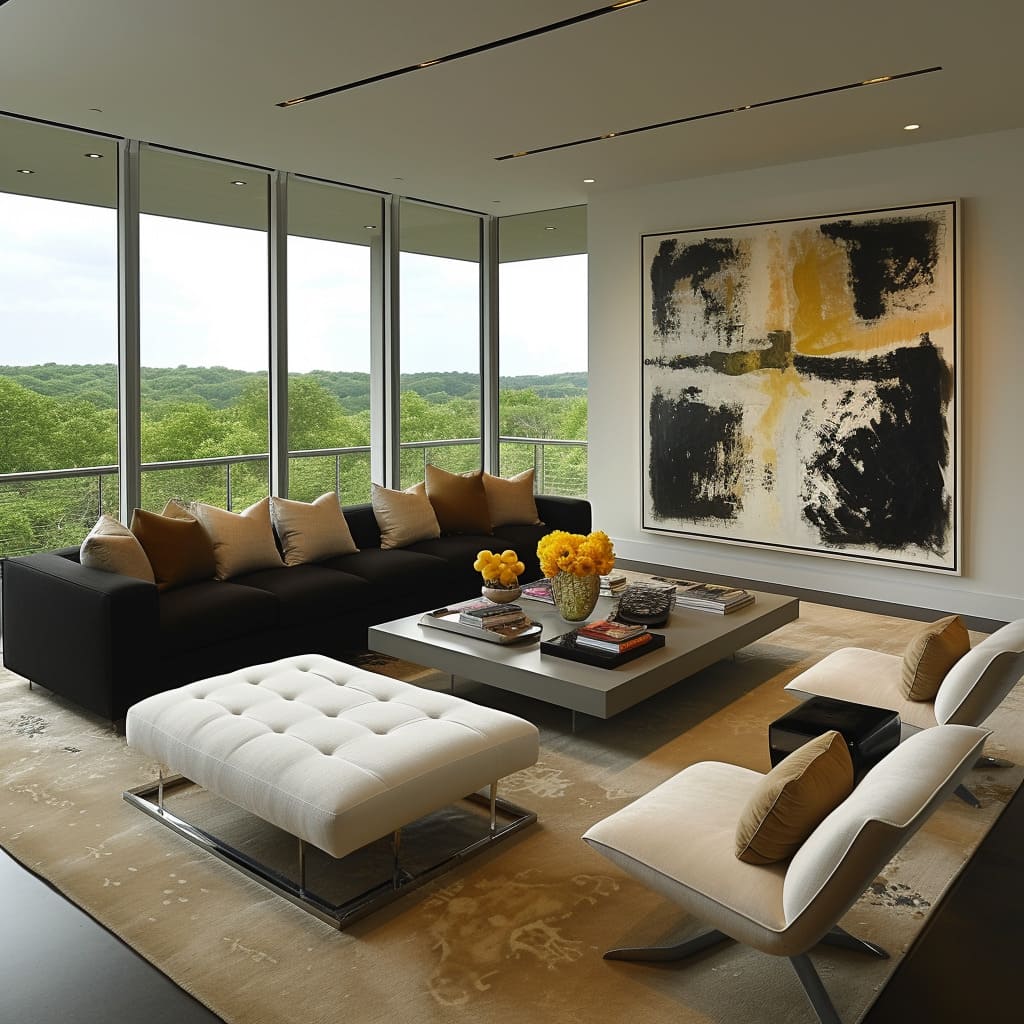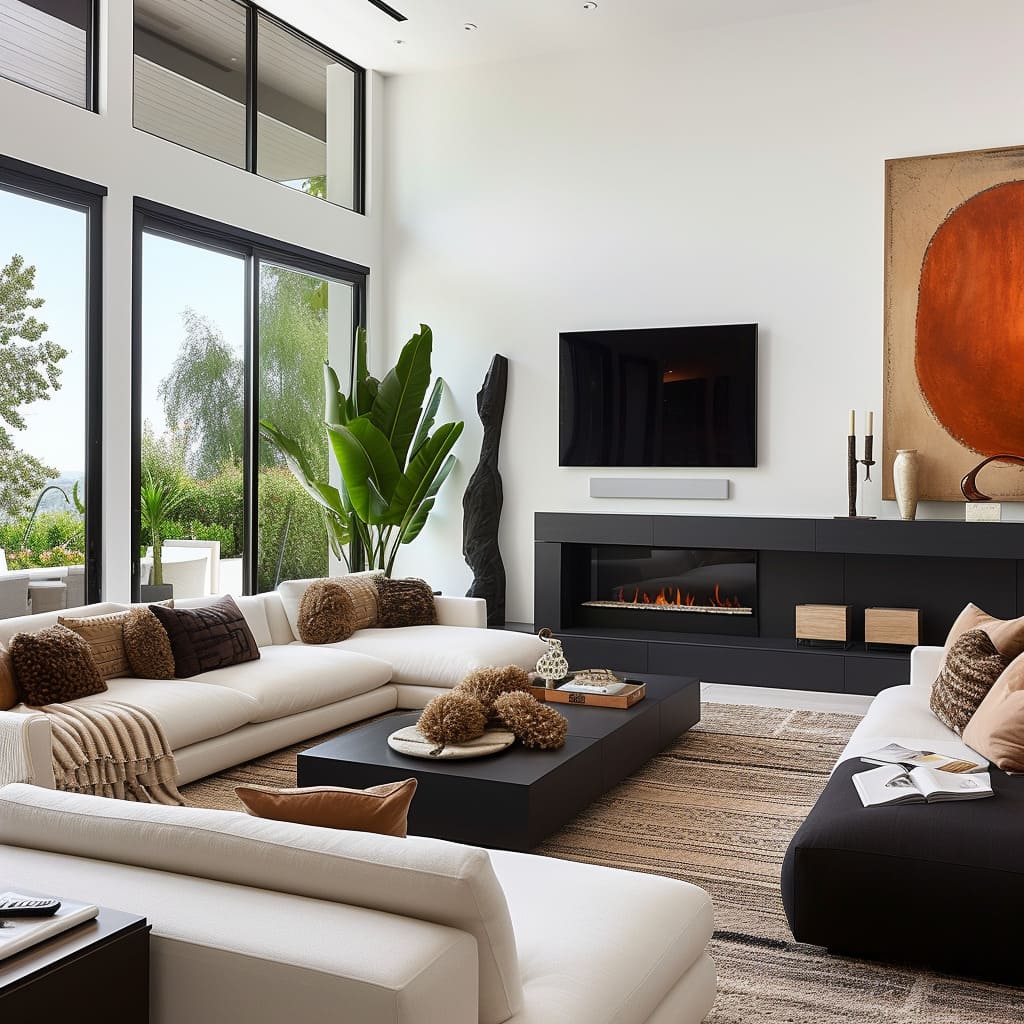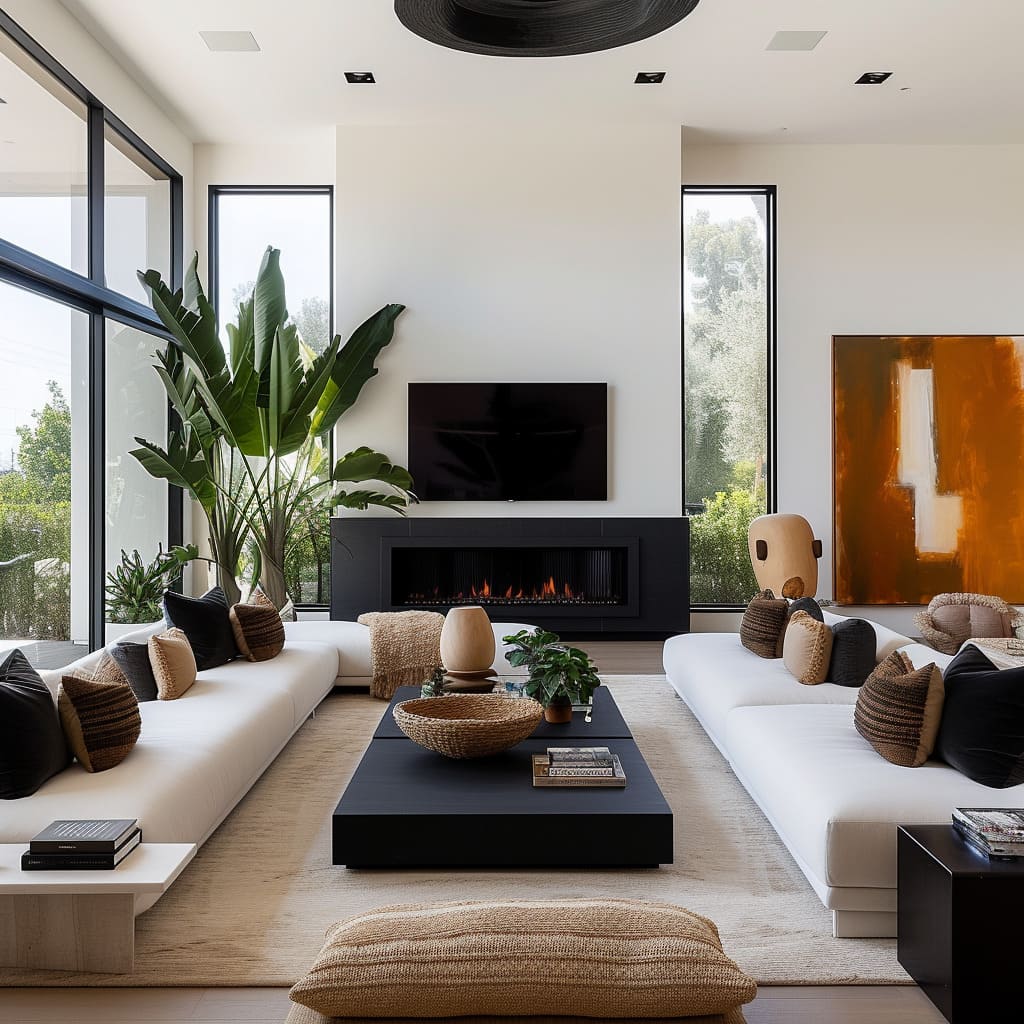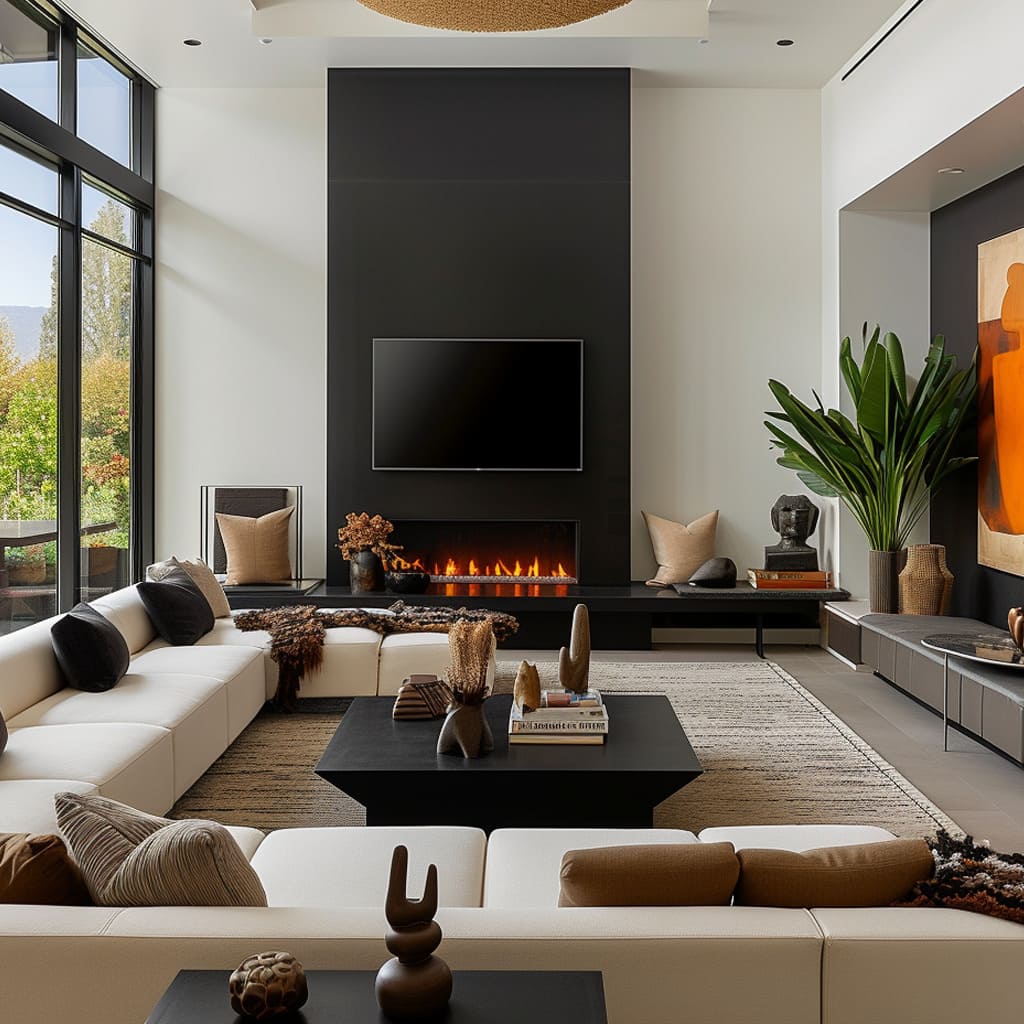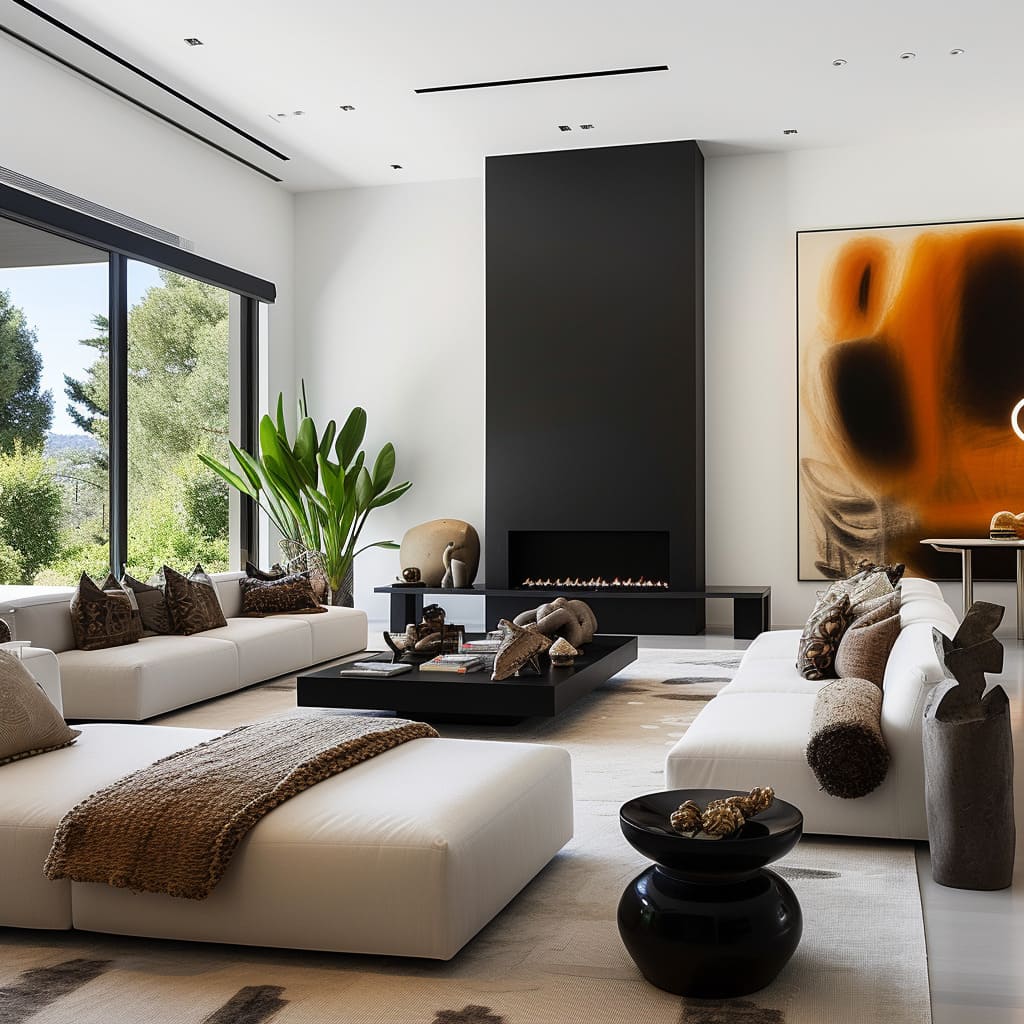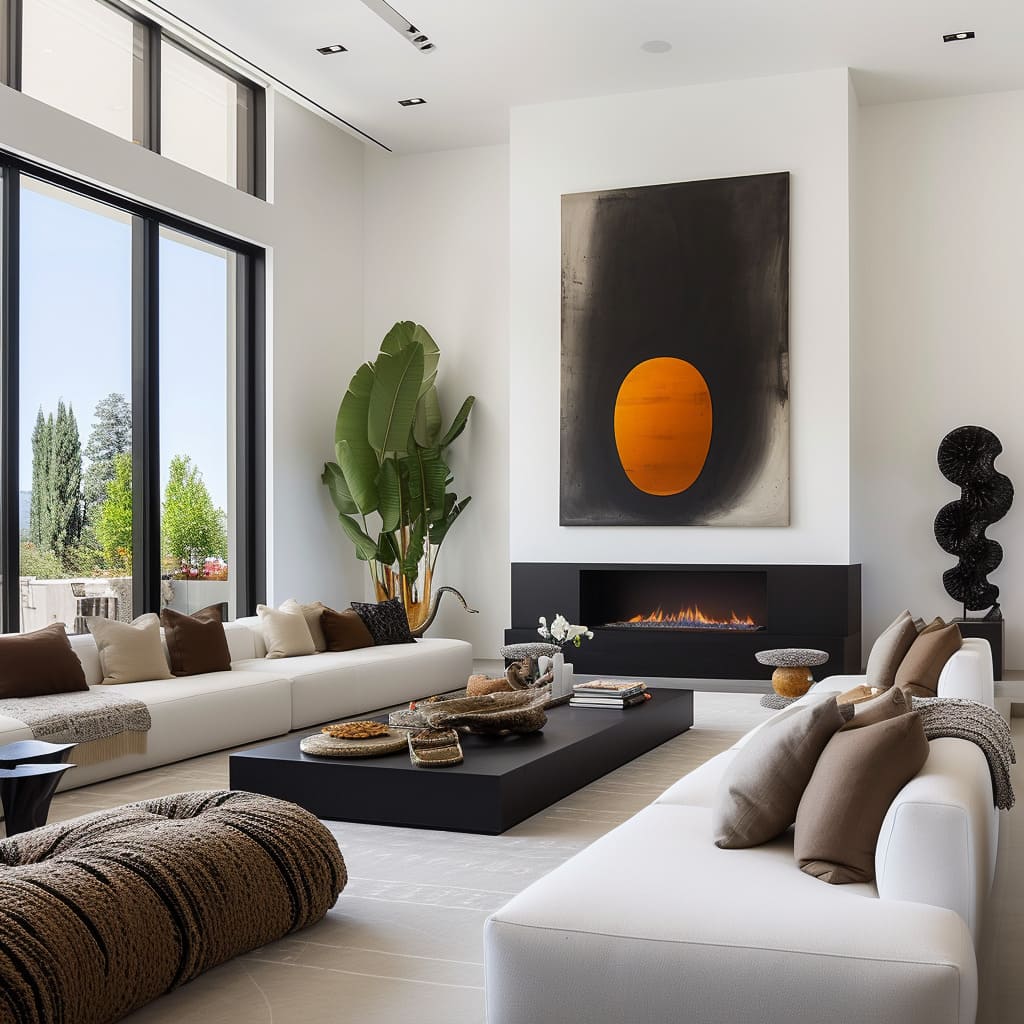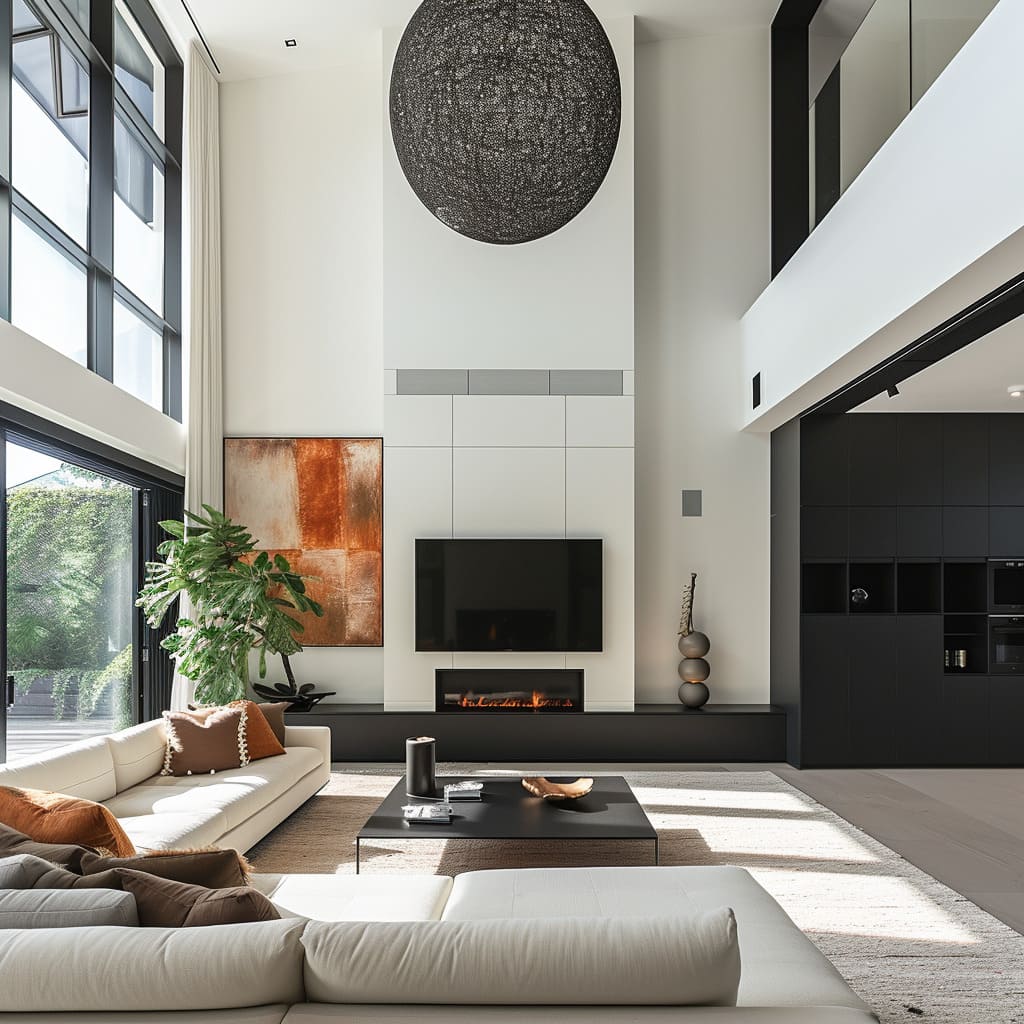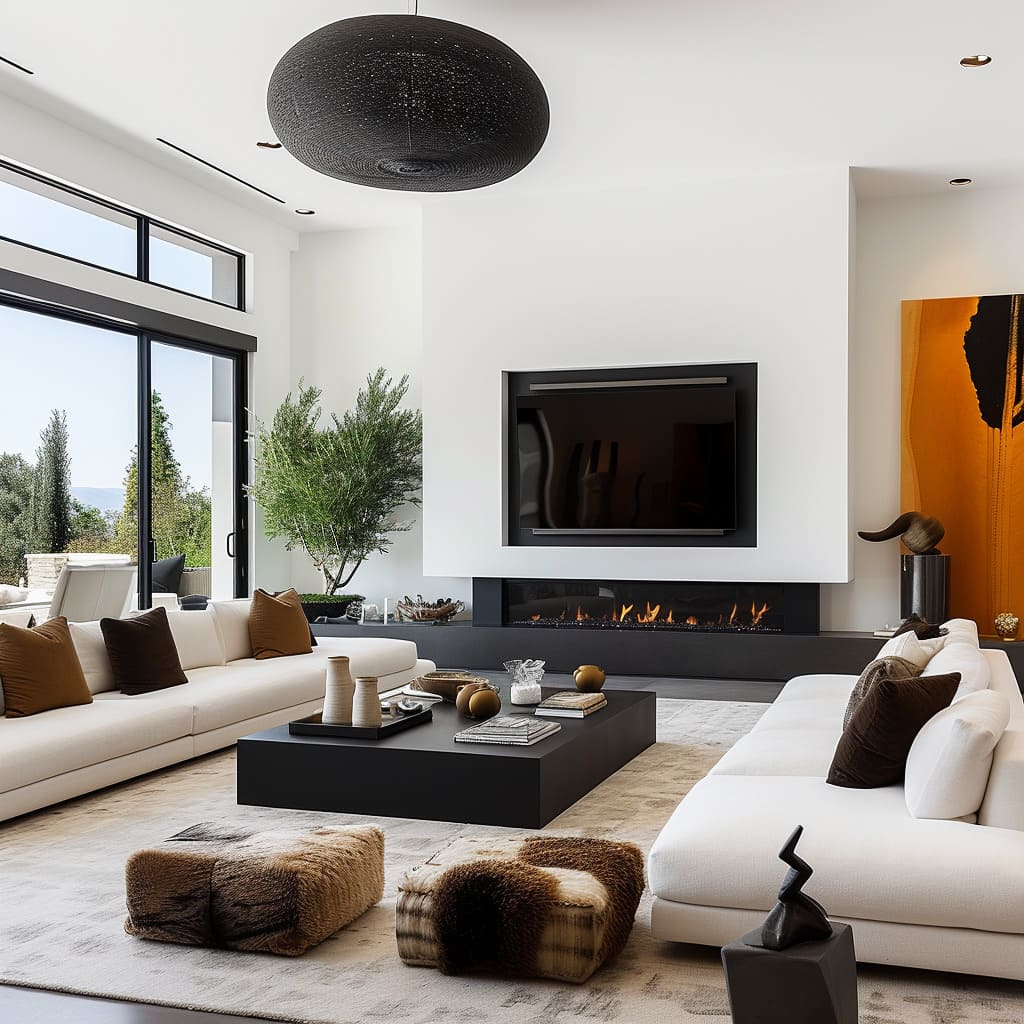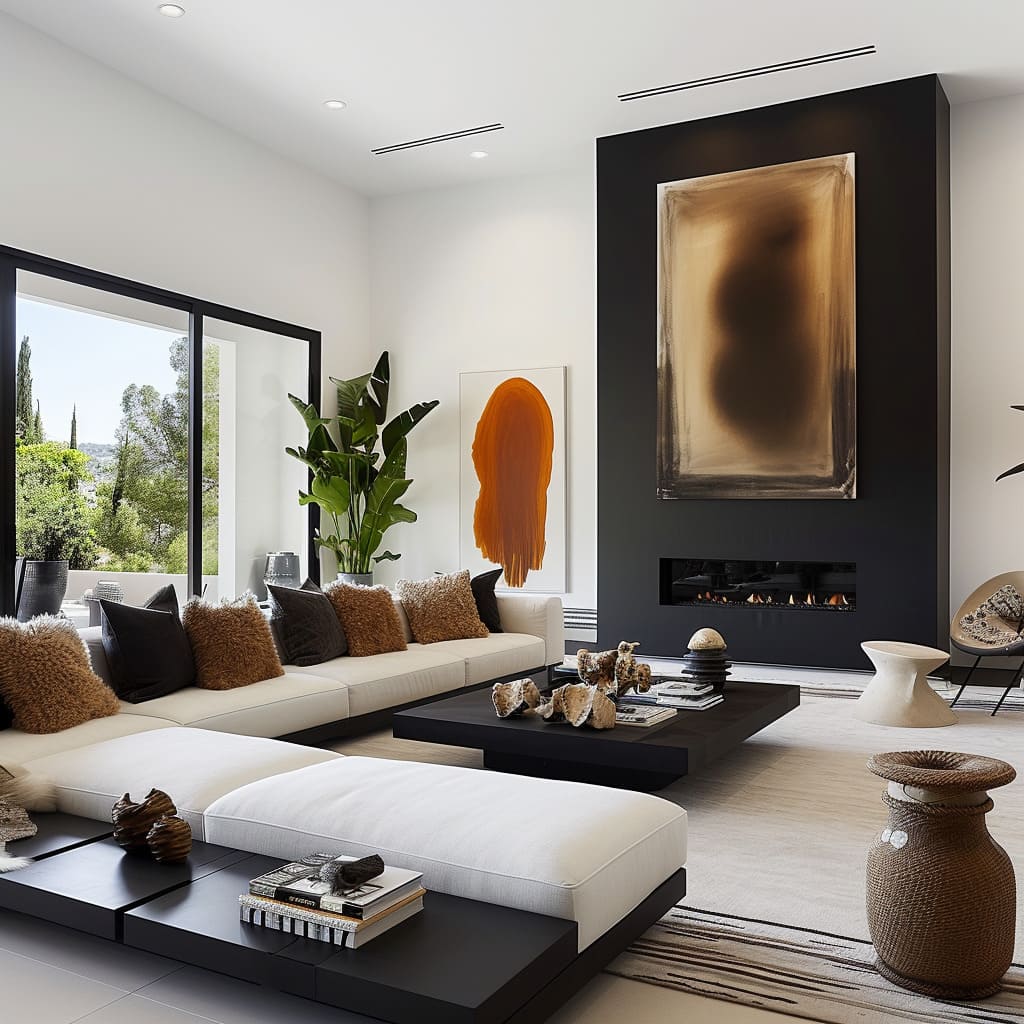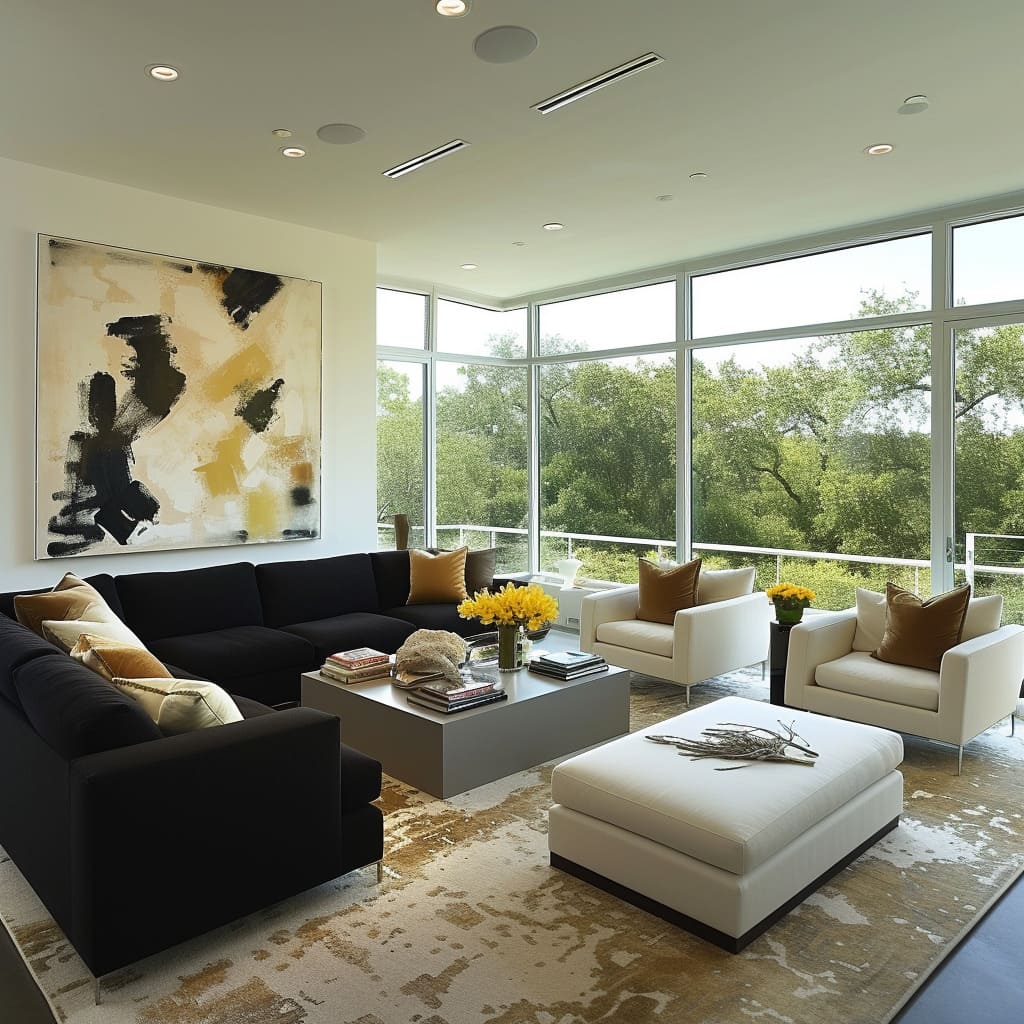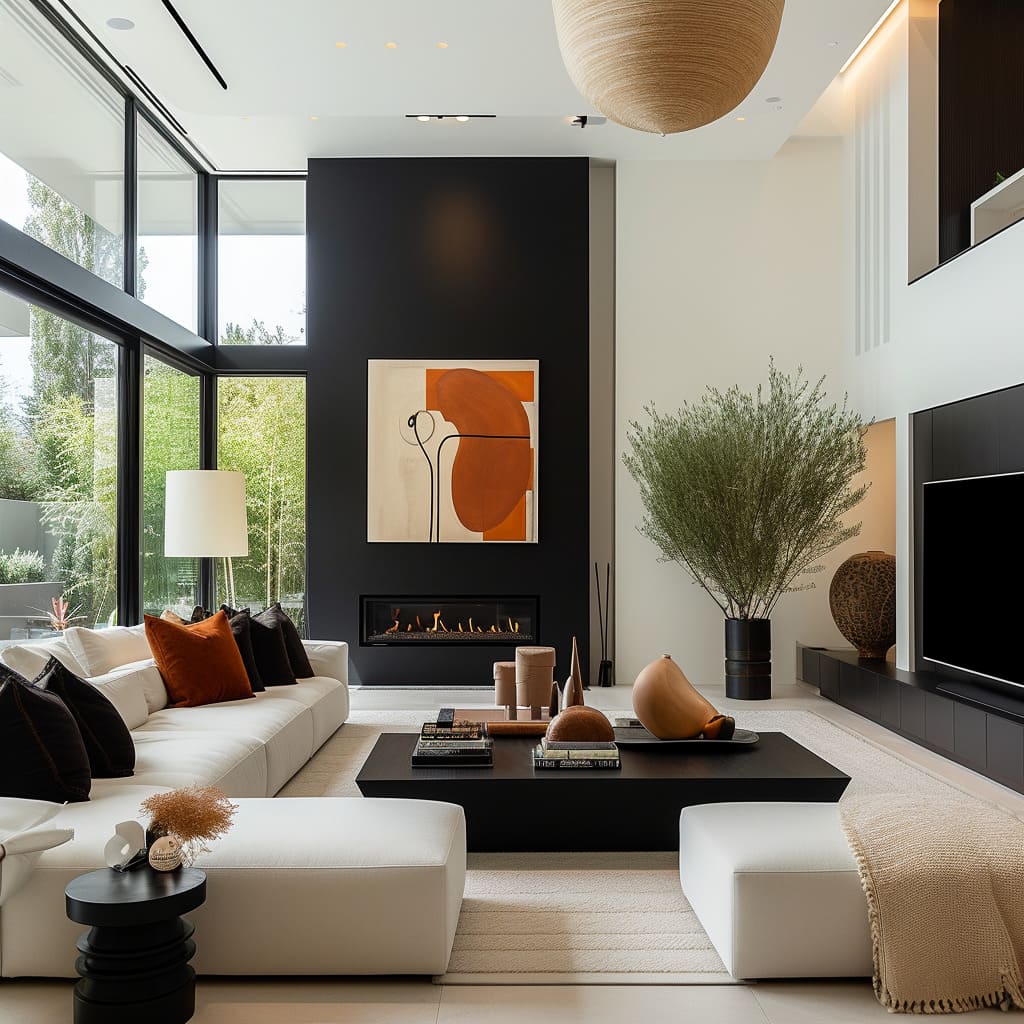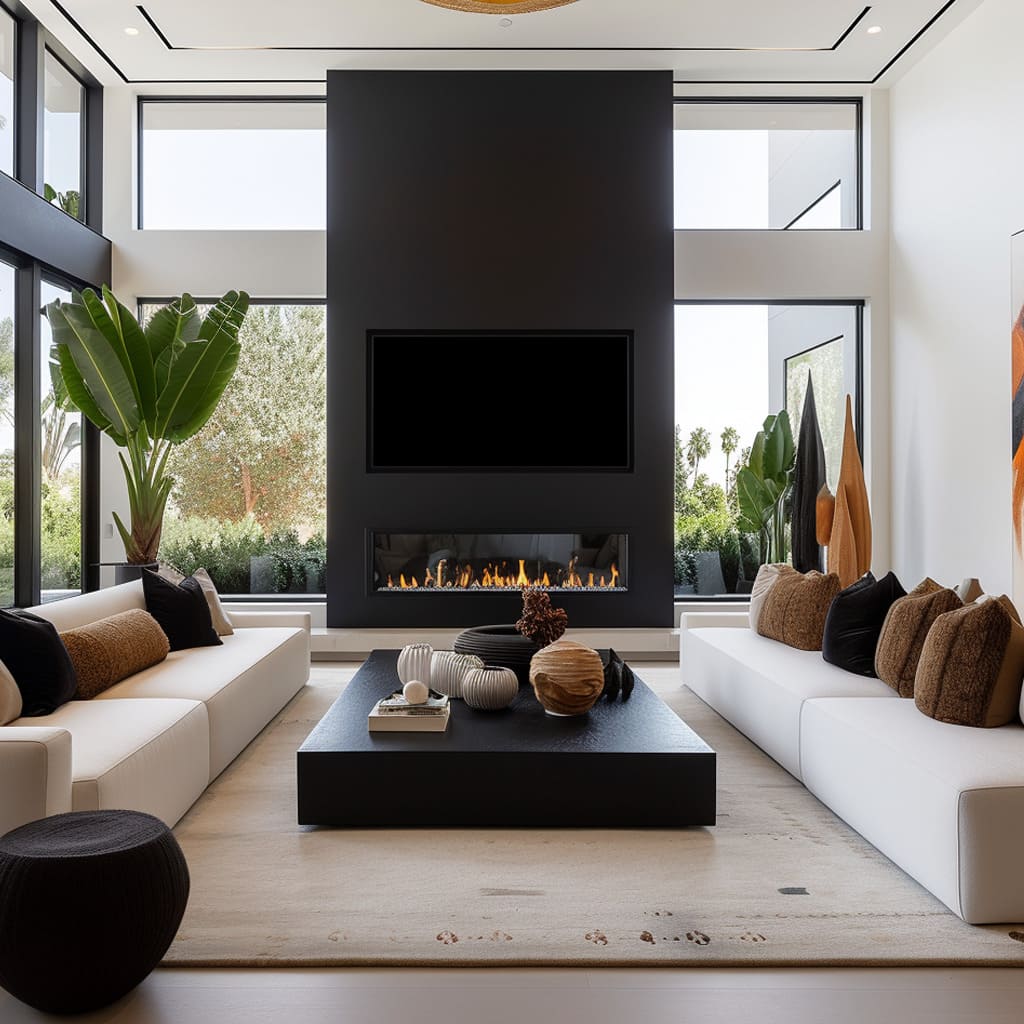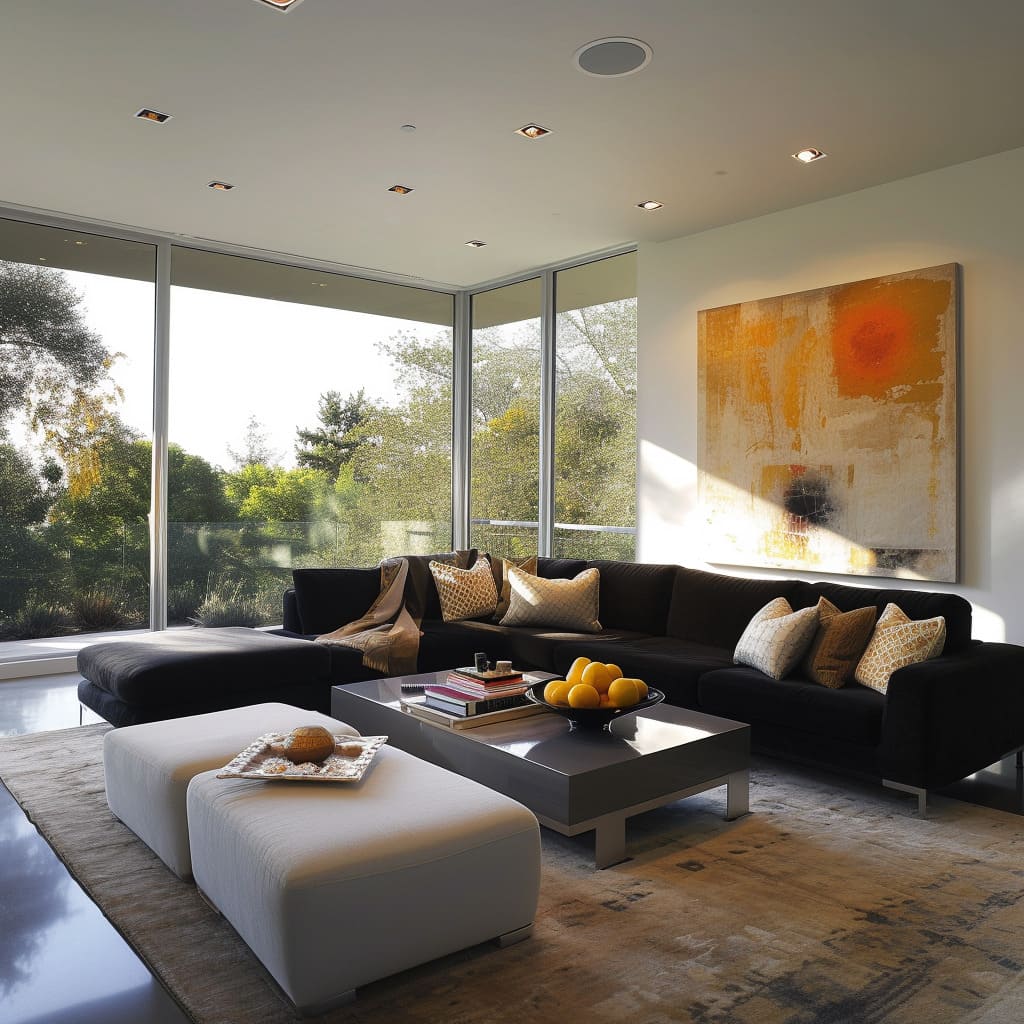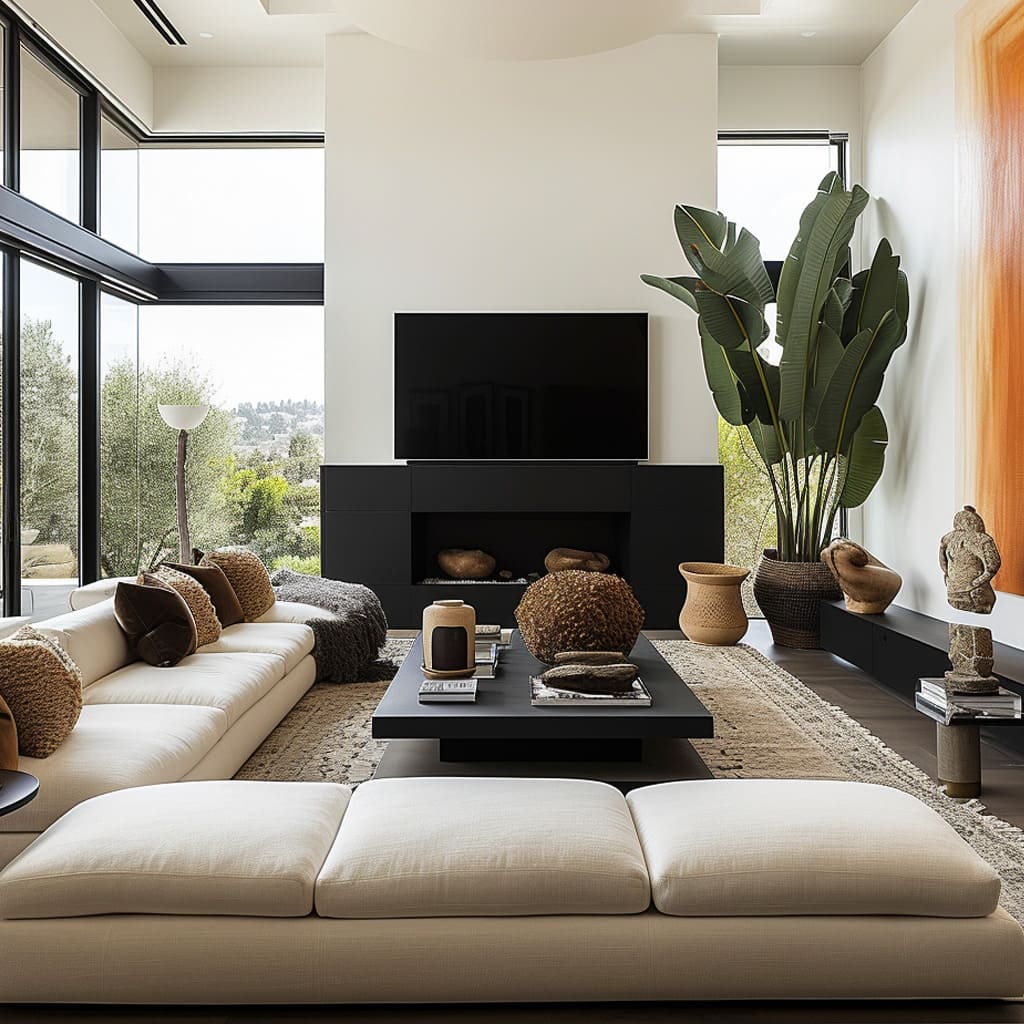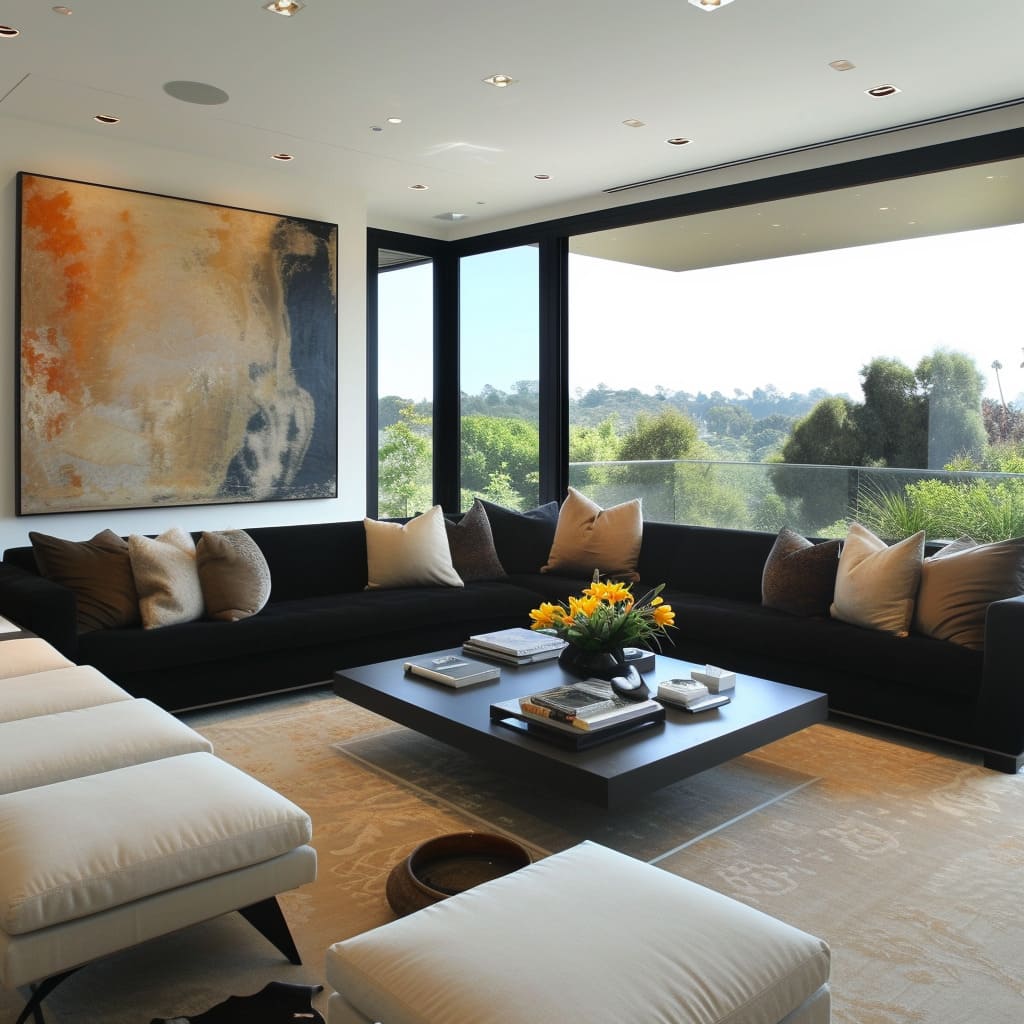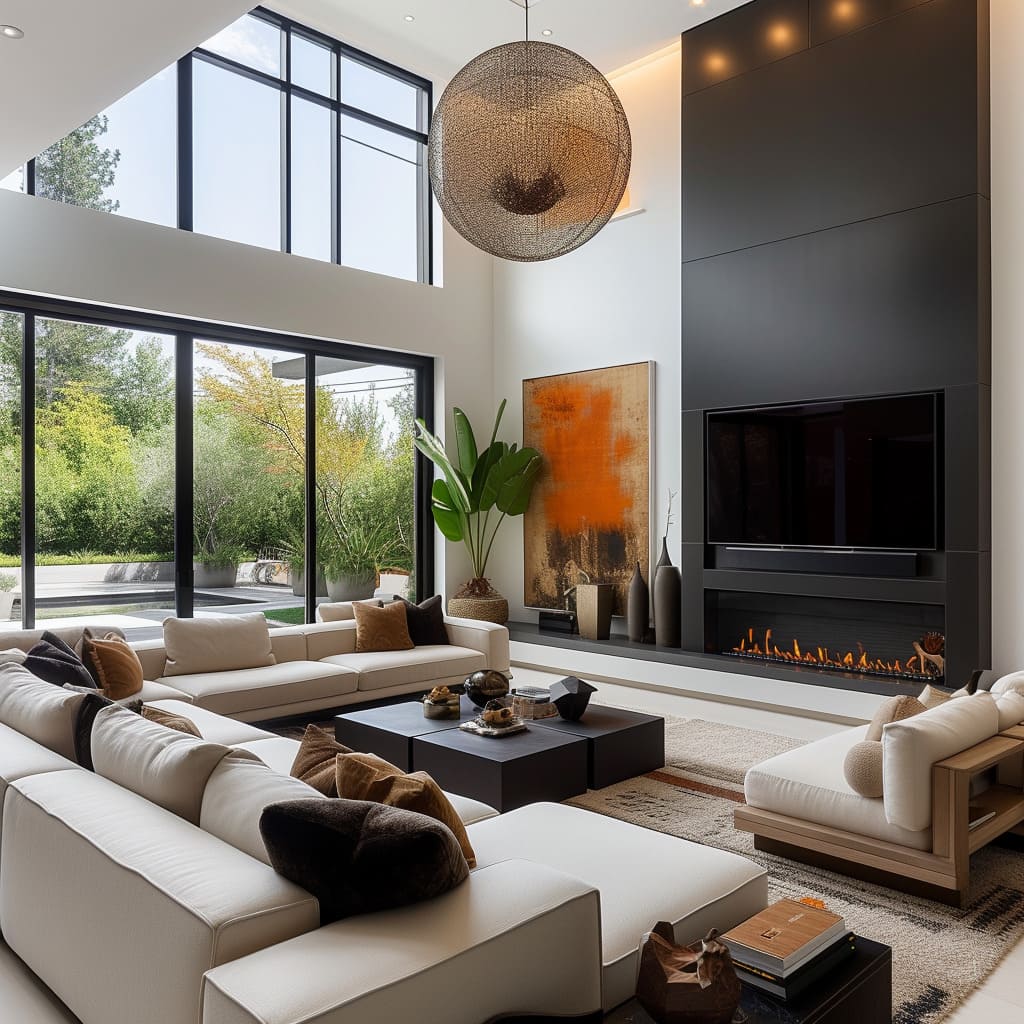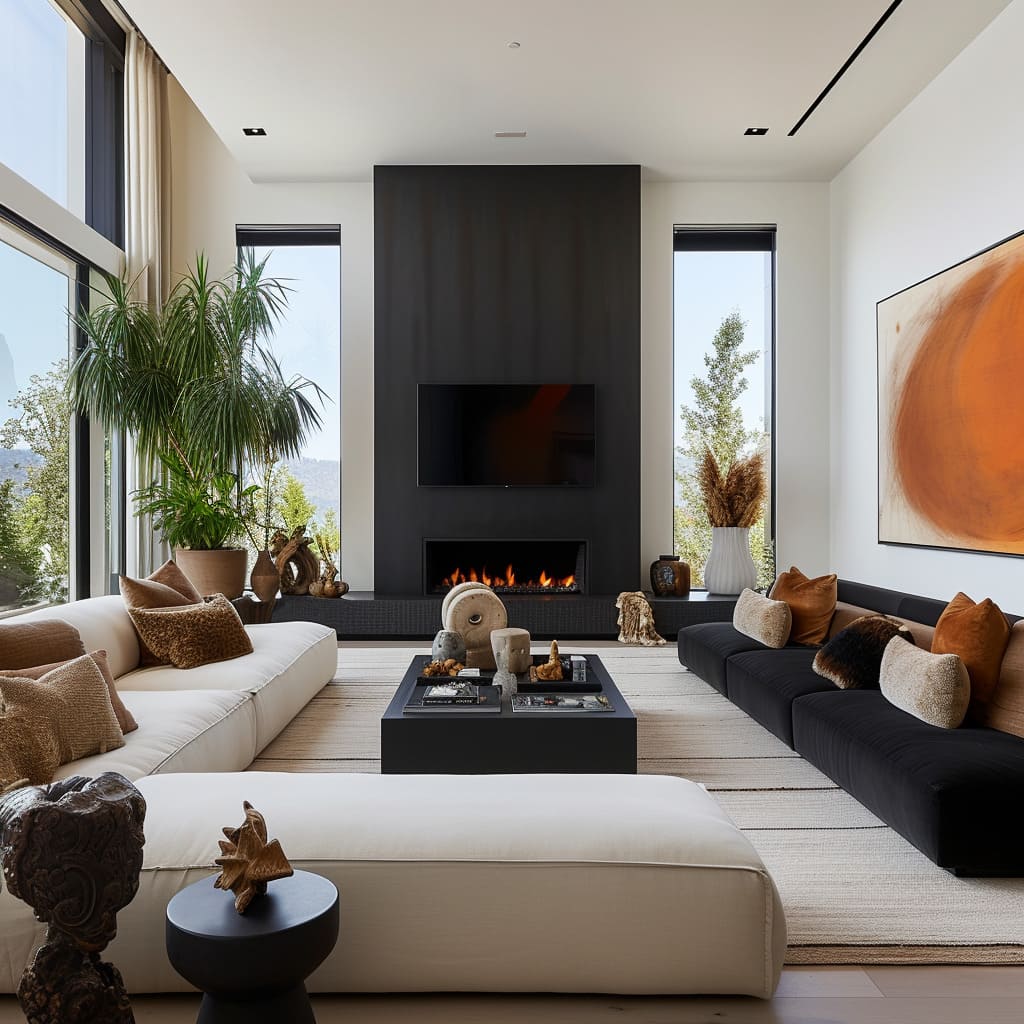In a world where home is increasingly becoming a multifaceted sanctuary, the art of interior design plays a pivotal role in shaping spaces that are not only visually striking but also inherently comfortable and functional. This article delves into the essence of contemporary interior design, exploring a variety of living rooms that exemplify the seamless blend of modern aesthetics with practical living.
As we traverse through each meticulously crafted space, we uncover the underlying principles that make these designs stand out: a dedication to minimalism, an unwavering attention to detail, and a profound respect for architectural harmony.
From the clever use of textures and materials to the integration of natural elements, each aspect of these contemporary living rooms is designed to foster an atmosphere of serenity and sophistication. Join us as we dissect the key features that bring these spaces to life, offering insights and inspiration for those looking to infuse a touch of contemporary elegance into their own homes.
Whether you are a seasoned designer or a homeowner seeking to revamp your living space, this article aims to provide a comprehensive guide to achieving a modern, minimalist aesthetic that transcends the ordinary.
The Hallmarks of Sleek Contemporary Interior Design
The spaces we explore are a testament to the harmony of design elements that come together to form environments that are not only sleek and sophisticated but also exude a sense of calm serenity. Let’s delve into the key characteristics that define these modern interiors
Neutral Tones & Accents in Color Palette
The color schemes are primarily neutral, featuring shades of white, beige, gray, and black, with occasional bursts of color such as burnt orange, which adds warmth and a focal point without overwhelming the serene ambiance. In the interior designs, we see these neutral tones not just in the walls and furniture, but also in the art pieces and decorative elements, such as vases and cushions.
This creates a cohesive look throughout the space.
The occasional use of bold colors in artwork or throw pillows serves to draw the eye and break up the monochromatism, giving life to the space without disturbing the tranquil setting. To implement such a color scheme, one should start with a base of neutrals for walls and large furniture pieces, adding color through accessories and artwork that can be changed out with the seasons or as tastes evolve.
Modern Furniture: Low-Profile & Modular
Low-profile, modular furniture with clean lines is prevalent. Sofas and sectionals are often in white or light neutral tones, providing a stark contrast against darker elements.
Accent pieces like plush ottomans and sleek coffee tables are central, often in black or dark wood tones, which ground the space and give it depth. The furniture is not only selected for its aesthetic appeal but also for its functionality.
Modular pieces can be rearranged to suit different occasions, whether for a cozy family gathering or a more formal event. The contrast between the light sofas and dark tables or shelves emphasizes the room’s dimensions and brings an elegant balance.
To achieve this in your own space, choose furniture with a simple silhouette and allow for flexibility in arrangement. Consider pieces that offer both form and function, such as ottomans with storage or nesting tables that can be spread out or tucked away as needed.
Diverse Materials: Texture and Finish
A variety of textures and materials are utilized to add visual interest and tactile diversity. This includes soft furnishings, smooth leather, plush rugs, glossy finishes on furniture, and matte or semi-gloss painted walls.
The materials showcase a careful curation that balances different textures, from the softness of the fur throws to the sleekness of leather chairs.
The juxtaposition of glossy and matte surfaces plays with light, adding depth and richness to the space. When choosing materials for your interior, consider a mix that appeals to the senses.
A plush rug underfoot adds comfort, while leather can be both luxurious and durable. Glossy finishes on smaller pieces can act as highlights within the room without overwhelming, and matte finishes on larger surfaces help to soften the overall effect.
Natural and Artificial Lighting
Lighting plays a critical role in these designs. Large floor-to-ceiling windows invite natural light, enhancing the open and airy feel.
For artificial lighting, recessed ceiling lights and statement light fixtures like oversized pendant lamps add both illumination and decorative elements. The lighting fixtures are chosen not just for their functional output but also for their design, acting as sculptural elements that complement the room’s modern aesthetic.
Strategic placement of spotlights can accentuate architectural features or artworks, while soft, diffused lighting can create a warm, inviting ambiance for relaxation. To incorporate effective lighting in your interior, consider the purpose of each area – task lighting for reading or workspaces, ambient lighting for general illumination, and accent lighting to highlight art or architectural features.
Dimmer switches can add flexibility, allowing you to adjust the mood and intensity of the light throughout the day.
Space and Focal Points
The rooms often have high ceilings, which contribute to a feeling of spaciousness. Some designs include a central fireplace, which acts as a cozy, inviting focal point.
The use of large, black-framed windows creates a dramatic contrast and brings the outside in, connecting the interior with the exterior landscape. The architecture serves as the canvas for interior design, with features like exposed beams or architectural recesses adding character.
Open floor plans enhance the sense of space and promote a seamless flow between different areas. To emulate these architectural elements, focus on maximizing natural light and consider incorporating at least one standout feature, like a fireplace or an interesting window design, to anchor the room.
If structural changes are not possible, the illusion of higher ceilings can be achieved with low-profile furniture and vertical lines in decor.
Wall Art and Decor
Bold and large-scale artwork is a recurring feature, often in abstract styles with colors that complement the overall color scheme. Decorative objects are curated and placed intentionally, avoiding clutter, to maintain a minimalist yet homely atmosphere.
The artwork often serves as the room’s centerpiece, setting the tone for the color palette and the room’s overall vibe.
The art pieces are not only well-chosen for their visual impact but also for their ability to evoke emotion or thought, adding a layer of depth to the interior. When selecting wall art and decor for your space, opt for pieces that resonate with you personally and create a dialogue with the other elements in the room.
The art should be proportionate to the wall it adorns, and the decor should be selected not just for aesthetic but also for personal significance, ensuring your space is truly reflective of your tastes and experiences.
Flooring Choices: Light Hues and Textures
The floors are typically light, with either large tiles or wide-plank hardwood, contributing to the bright and expansive feel of the space. Area rugs are used to define seating areas and add layers and warmth.
The choice of light flooring helps to reflect natural light, enhancing the overall luminosity and sense of space within the room.
Notably, the use of area rugs not only contributes to the aesthetic by adding texture and color but also serves to delineate different functional areas within larger open-plan spaces, such as a sitting area or a dining space. For those looking to replicate this feature, select flooring that complements the natural lighting of your space.
Consider the use of area rugs to anchor furniture groupings and add a touch of coziness, ensuring they are proportionate to the furniture and space they are in.
Blending Indoors and Outdoors
Many of these designs seamlessly integrate outdoor living spaces, with patios or gardens visible through the expansive windows, blurring the lines between interior and exterior. The strategic use of glass not only maximizes the view but also encourages the flow of natural light, making the outdoor space an extension of the interior.
The outdoor views act as a living backdrop, with the change of seasons providing a dynamic element to the interior decor. To achieve such integration, focus on creating a visual and physical connection to the outdoors.
Large windows or glass doors can be complemented with consistent flooring and a cohesive color palette that transitions smoothly from inside to outside.
Furniture Arrangement for Interaction
The arrangement of furniture is intentional, promoting conversation and interaction. The seating is often oriented towards a central point, be it a television, fireplace, or a stunning view outside.
Furniture is placed to not only face these focal points but also to facilitate easy movement around the room, ensuring that the space remains open and inviting.
Groupings of sofas and chairs create intimate areas for socializing, while ensuring that the space doesn’t feel crowded. To adopt this approach in your own home, consider the main activities that will take place in each room and arrange your furniture to support these.
Leave ample space for walkways and consider sightlines from various seating positions to ensure that each spot feels connected to the central focal point.
Streamlined Design
There is a notable lack of unnecessary adornment. The spaces are kept uncluttered, with clean lines and a focus on form and function.
Storage solutions are often built into the walls or furniture pieces, keeping everyday items out of sight and maintaining a tidy appearance. The living rooms showcase how minimalism isn’t just about having fewer items, but about the careful selection and placement of each piece to create a space that feels both open and intentional.
Furniture with sleek, geometric forms not only serves its purpose but also acts as a statement piece within the room. To incorporate minimalism into your interior, focus on quality over quantity.
Choose furniture that offers multiple functions, like storage ottomans, and keep surfaces clear of clutter. Each item in the room should have a purpose and a place, with the overall design reflecting a harmonious and balanced approach.
Plants and Greenery
Strategic placement of indoor plants adds a touch of nature and vitality to the spaces, enhancing the connection to the outdoors and improving air quality.Plants vary from small succulents on coffee tables to larger potted trees that can create a focal point in a corner or beside a sofa. These living elements introduce different textures and shades of green, contrasting with the neutral tones of the room and adding a layer of visual interest.
For incorporating plants into your own space, consider the lighting and climate of your room to select the appropriate species. Use plants to fill empty spaces or to add height and dimension to flat areas.
Groupings of plants at different heights can create a more curated look, and choosing pots that match your room’s color scheme will maintain a cohesive aesthetic.
Textiles and Accessories: Creating Depth and Comfort
Cushions, throws, and rugs feature a mix of textures, from smooth and silky to chunky knits, adding comfort and depth. The accessories are minimal but impactful, such as sculptural vases, bowls, and candles.
The designs illustrate how these textiles can be layered to create an inviting and cozy atmosphere.
Throws are draped over sofas, and cushions are arranged to provide both aesthetic appeal and comfort. When it comes to accessories, less is more; a few well-chosen pieces can set the tone for the room without overwhelming the senses.
To achieve a similar effect, mix textures and materials within your textiles, like pairing a silk throw with a wool rug. Choose accessories that are unique and speak to your style, but keep them to a minimum to let each piece stand out and contribute to the space’s overall narrative.
Throughout this exploration of contemporary living room designs, we’ve uncovered the subtleties and nuances that make this style so appealing and timeless. From the intentional use of a calming neutral color palette to the strategic placement of lighting and the integration of nature through plants and greenery, every aspect has been crafted to enhance both the aesthetic and functional qualities of the living space.
The minimalist approach, with its emphasis on decluttering and focusing on essential pieces, highlights the importance of space and light in creating an inviting atmosphere. Textiles and accessories, though used sparingly, play a significant role in adding texture and personality to the rooms.
The designs we’ve discussed are more than just a collection of trends; they represent a thoughtful approach to living where every element serves a purpose, contributing to the overall well-being of the occupants. These living rooms are not just showcases of good design but are spaces that encourage interaction, relaxation, and a connection with the surrounding environment.
For those inspired by these designs, the key takeaway is the importance of balance—between form and function, between presence and absence, and between indoors and out. By embracing these principles, you too can create a living space that is both contemporary in style and timeless in appeal, a place where every day feels like a step into a serene and beautiful haven.



